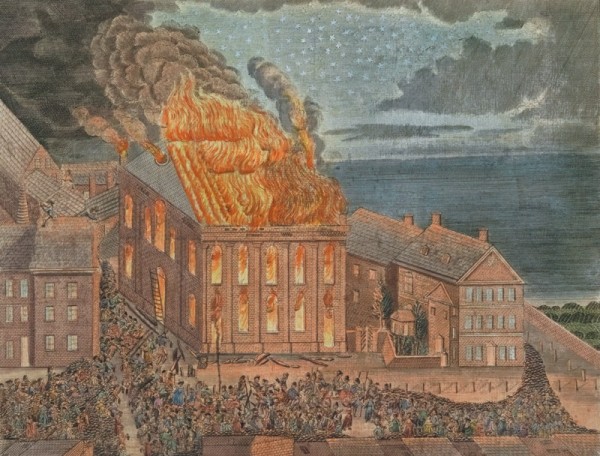
Prospect Of the new Lutheran Church in Philada which was on the 26th of Dec. 1794 in the evening from the hour of eight till twelve Consumed by Fire, engraved by Frederick Reiche, Philadelphia, Pennsylvania, 1795. (Courtesy, Historical Society of Pennsylvania.)
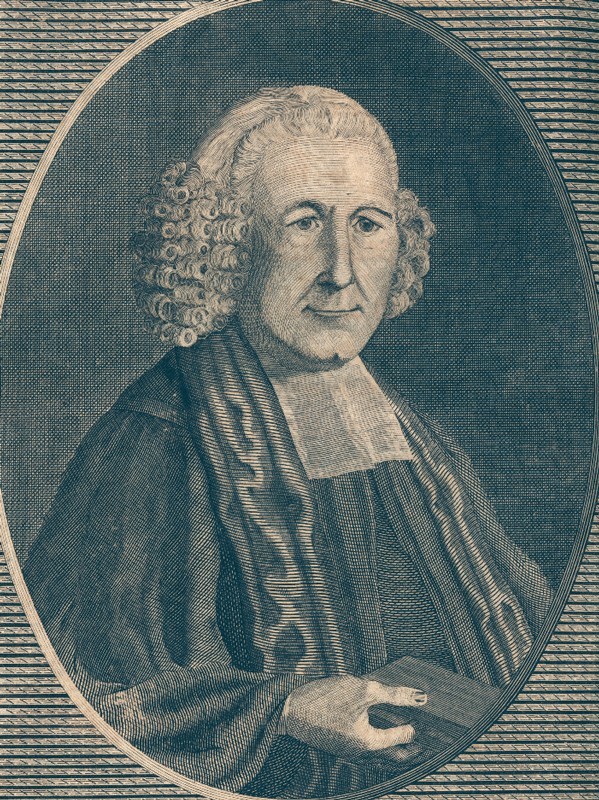
Detail of a portrait of Henry Melchior Muhlenberg, from Justus Heinrich Christian Helmuth, Denkmal der Liebe und Achtung . . . dem Herrn D. Heinrich Melchior Mühlenberg (Philadelphia: Melchior Steiner, 1788). (Courtesy, Lutheran Archives Center, Philadelphia.)
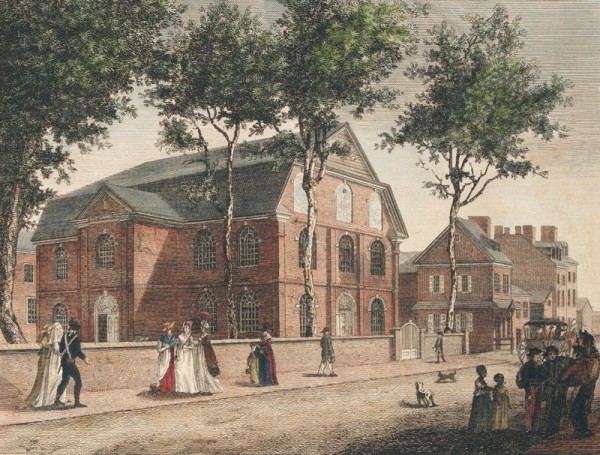
Old Lutheran Church, in Fifth Street, Philadelphia, drawn and engraved by William Russell Birch and Thomas Birch, Philadelphia, Pennsylvania, 1800, and published in Birch’s Views of Philadelphia (Philadelphia: W. Birch, 1800). (Courtesy, Winterthur Library, Printed Book and Periodical Collection; photo, James Schneck.)
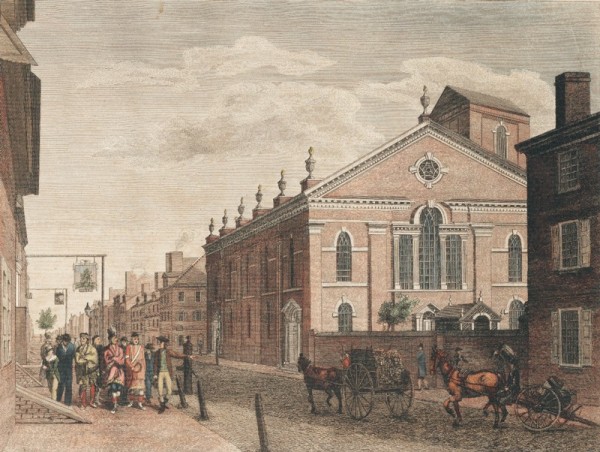
New Lutheran Church, in Fourth Street Philadelphia, drawn and engraved by William Russell Birch and Thomas Birch, Philadelphia, Pennsylvania, 1799, and published in Birch’s Views of Philadelphia (Philadelphia: W. Birch, 1800). (Courtesy, Winterthur Library, Printed Book and Periodical Collection; photo, James Schneck.) When Philadelphia was the federal capital during the 1790s, delegations of Indians visited the city to settle affairs with the government. This engraving is said to depict Frederick Muhlenberg conducting a tour for one of these groups.
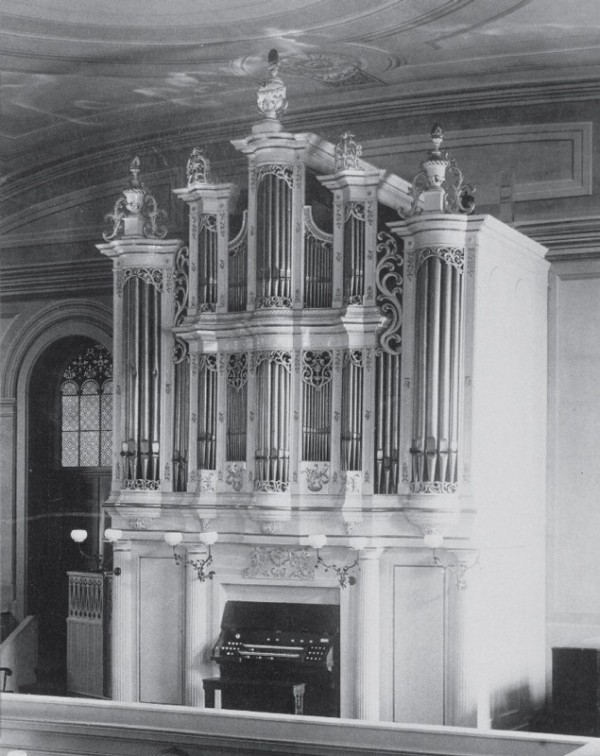
Peter Frick, organ case, Lancaster, Pennsylvania, 1771–1774. (Courtesy, Holy Trinity Lutheran Church, Lancaster, Pa.; photo, ca. 1880.)
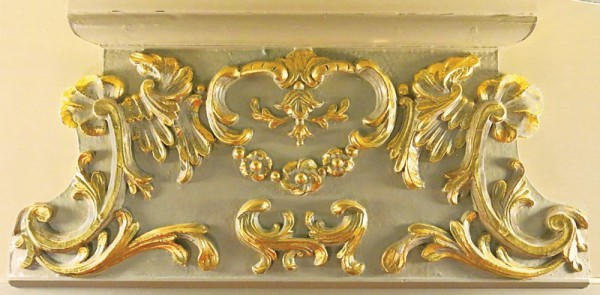
Detail of the carved plaque at the base of the central tower on the organ illustrated in fig. 5. (Courtesy, Holy Trinity Lutheran Church, Lancaster, Pa.; photo, Lloyd Bull.)
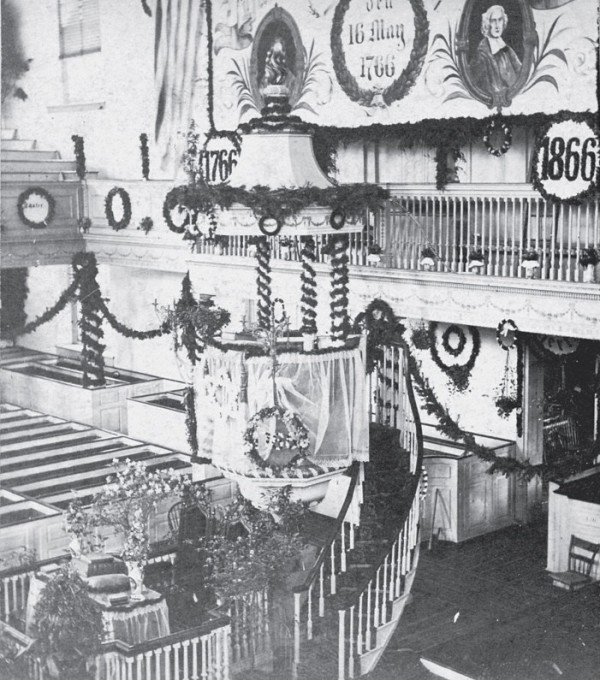
Photograph of Zion Lutheran Church interior, Philadelphia, Pennsylvania, 1866. (Private collection; photo, Winterthur Museum.)
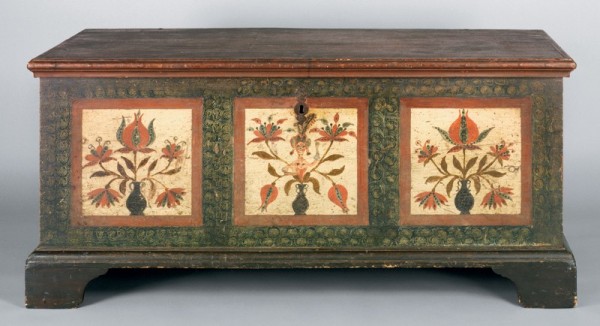
Christian Selzer, chest, Jonestown, Lebanon County, Pennsylvania, ca. 1796. White pine with tulip poplar. H. 23 1/2", W. 52 1/4", D. 22 5/8". (Courtesy, Winterthur Museum; photo, Laszlo Bodo.)
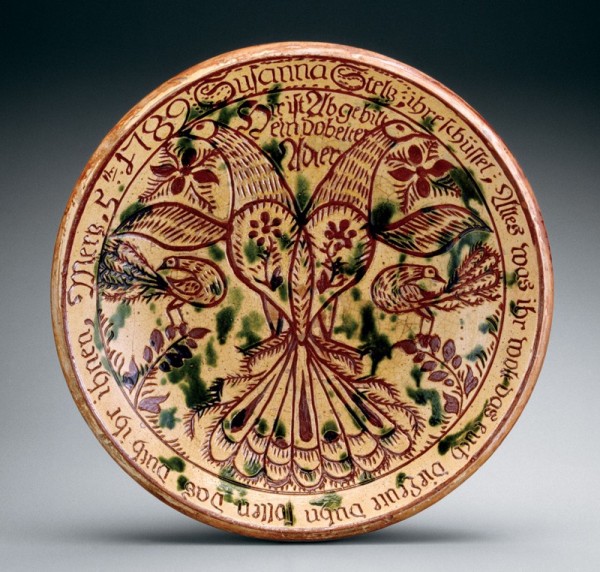
Dish attributed to George Hubener, Montgomery County, Pennsylvania, 1789. Lead-glazed red earthenware. Diam. 13". (Courtesy, Winterthur Museum; photo, Gavin Ashworth.)
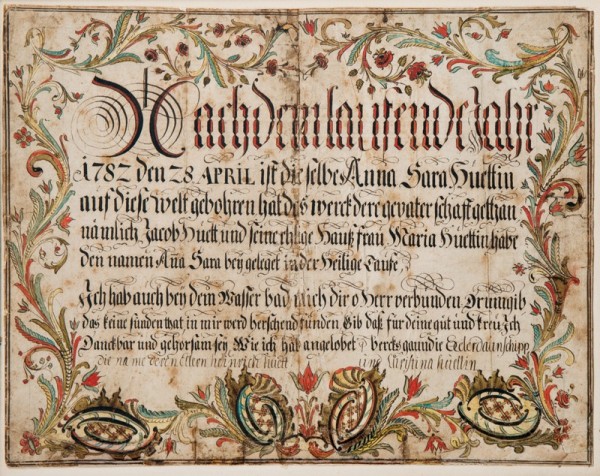
Birth and baptismal certificate for Anna Sara Huett, Berks County, Pennsylvania, ca. 1782. Watercolor and ink on laid paper. 16" x 12 1/2". (Courtesy, Steve and Susan Babinsky; photo, Gavin Ashworth.)
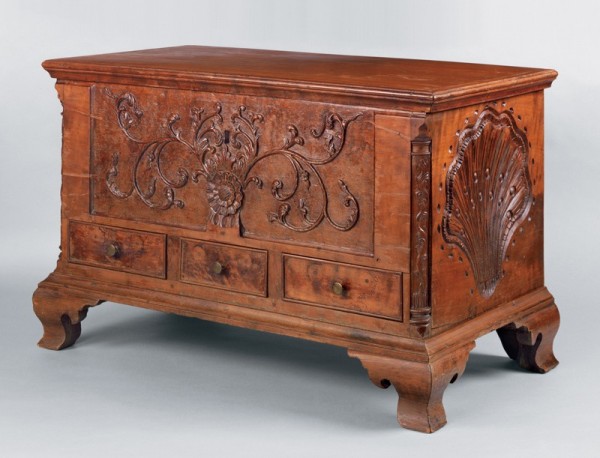
Chest-over-drawers, Manheim area, Lancaster County, Pennsylvania, ca. 1780. Cherry with walnut and yellow pine. H. 19", W. 29 1/4", D. 15 3/*4". (Private collection; photo, Winterthur Museum, Laszlo Bodo.) The brasses are replaced.
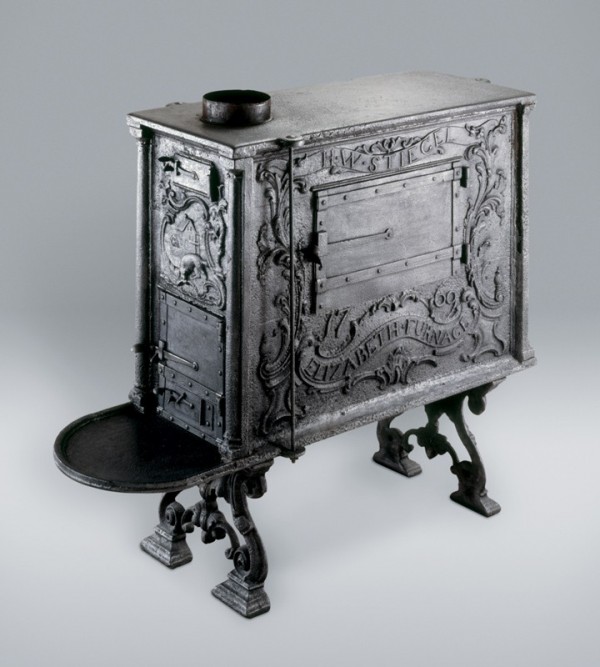
Ten-plate stove, Elizabeth Furnace, Elizabeth Township, Lancaster County, Pennsylvania, 1769. Iron. H. 63 1/4", W. 15", D. 44 1/4". (Courtesy, Hershey Museum; photo, Metropolitan Museum of Art, David Allison.) The front plate depicts Aesop’s fable of the dog and its reflection.

George Heap, The East Prospect of the City of Philadelphia in the Province of Pennsylvania (London Magazine, 1761). (Courtesy, American Philosophical Society.)
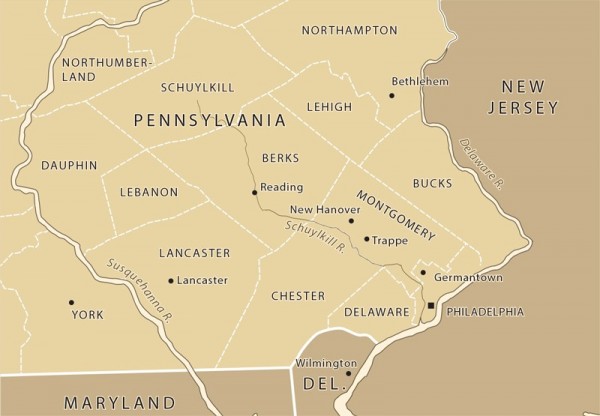
Map of southeastern Pennsylvania. (Artwork, Wynne Patterson and Tom Willcockson.)
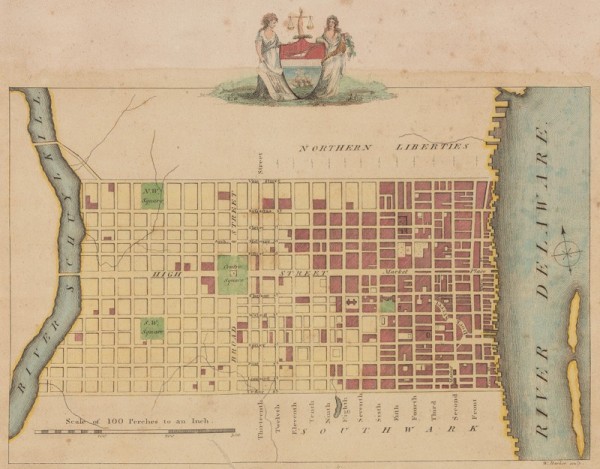
Plan of the City of Philadelphia, drawn and engraved by William Russell Birch and Thomas Birch, Philadelphia, Pennsylvania, 1800, and published in Birch’s Views of Philadelphia (Philadelphia: W. Birch, 1800) (Courtesy, Winterthur Library, Printed Book and Periodical Collection; photo, James Schneck.)
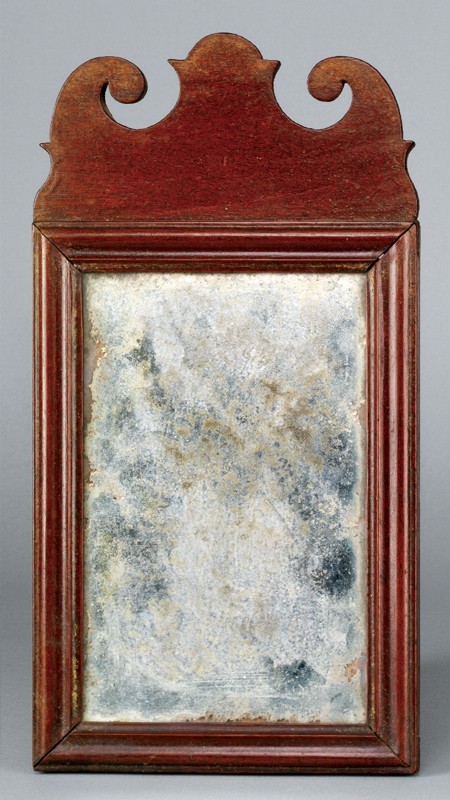
Looking glass labeled by John Elliott Sr., Philadelphia, Pennsylvania, 1762–1767. Walnut with white cedar. H. 13 1/4", W. 7", D. 3/4". (Private collection; photo, Winterthur Museum, Laszlo Bodo.)
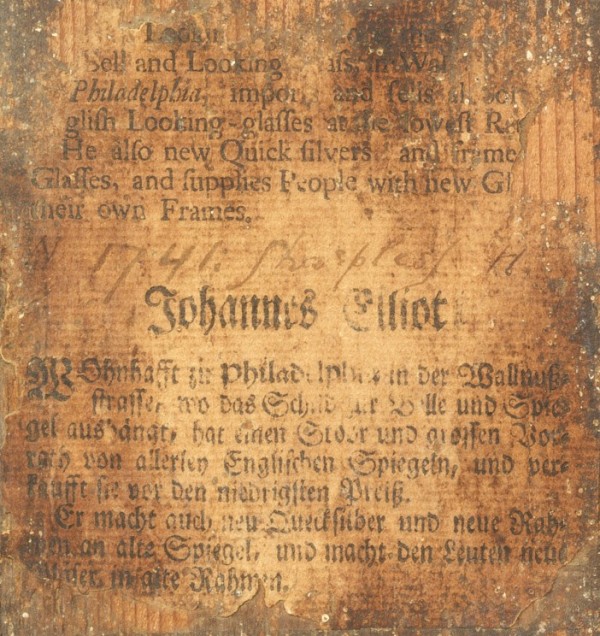
Detail of the label on the reverse of the looking glass illustrated in fig. 16.
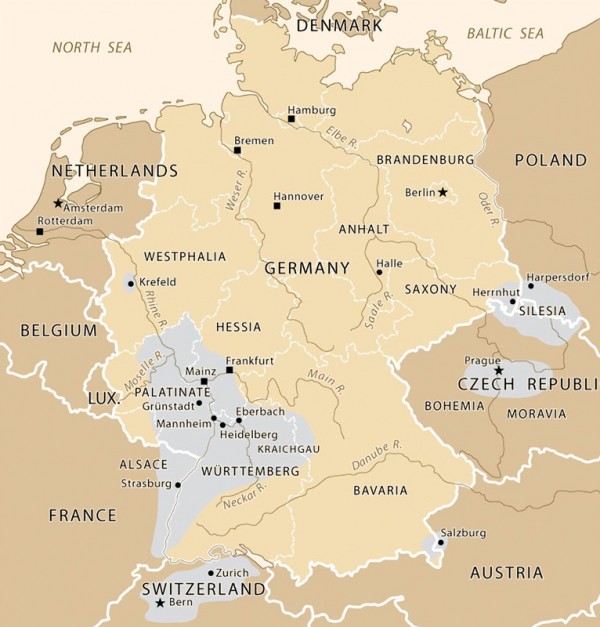
Map of European origins of German-speaking immigrants to Pennsylvania (in blue). (Courtesy, Winterthur Museum; artwork, Tom Willcockson, Mapcraft.com.)
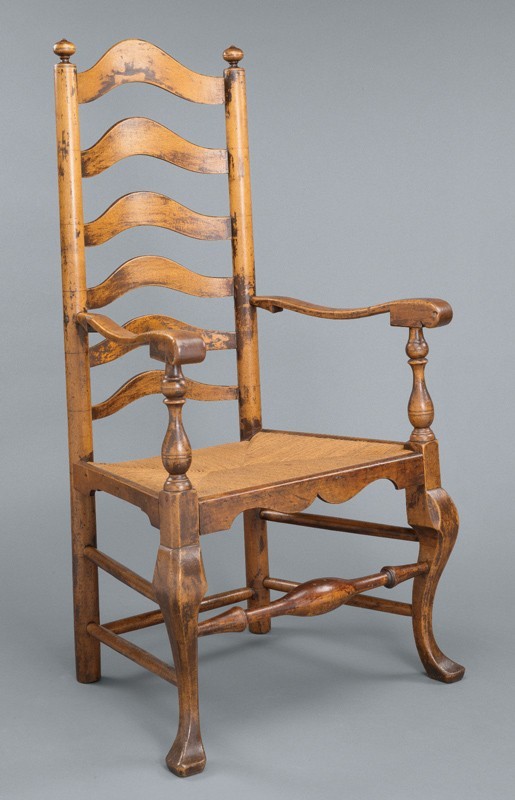
Armchair attributed to the shop of Solomon Fussell, Philadelphia, Pennsylvania, ca. 1740. Maple. H. 45", W. 25 1/2", D. 21 1/4". (Courtesy, Winterthur Museum; photo, James Schneck.)
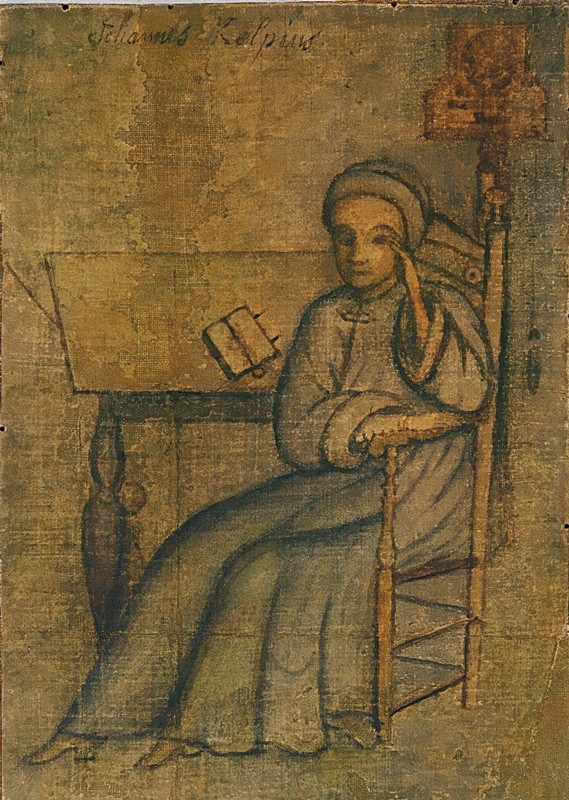
Christopher Witt, Johannes Kelpius, Germantown, Pennsylvania, ca. 1705. Watercolor and ink on laid paper. 9 1/8" x 6 3/8". (Courtesy, Historical Society of Pennsylvania.)
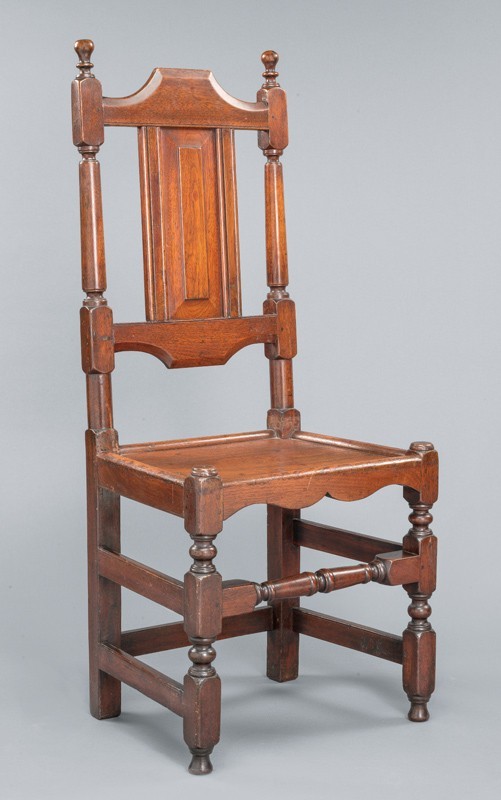
Side chair, probably Germantown, Pennsylvania, 1730–1740. Walnut. H. 43 3/4", W. 18 1/2", D. 15 1/2". (Courtesy, Winterthur Museum; photo, James Schneck.)
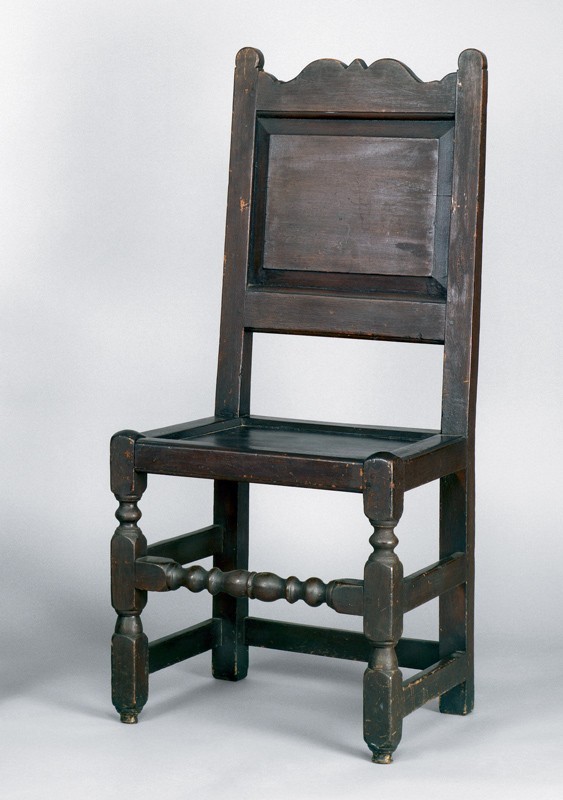
Side chair, probably West Marlborough Township area, Chester County, Pennsylvania, 1730–1750. Walnut. H. 40 1/2", W. 17 3/4", D. 16 1/2". (Courtesy, Primitive Hall Foundation; photo, Winterthur Museum, Laszlo Bodo.)
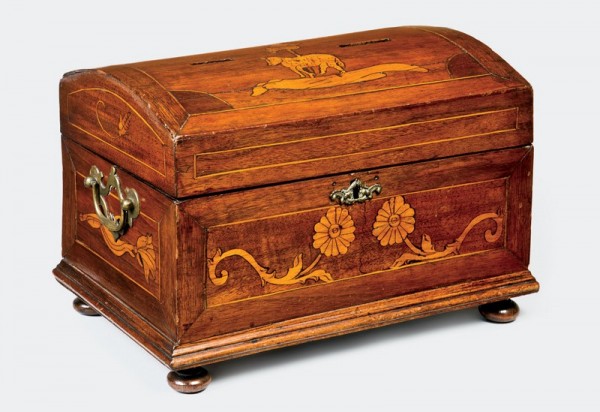
Chest, Philadelphia, Pennsylvania, ca. 1750. Walnut veneer and maple and mahogany inlay with yellow pine. H. 8 1/4", W. 12 1/4", D. 8". (Courtesy, Krauth Memorial Library, Lutheran Theological Seminary at Philadelphia; photo, Gavin Ashworth.) Two slots were inserted at a later date to convert the chest into an alms box or ballot box. The veneer was identified as American black walnut by microanalysis.
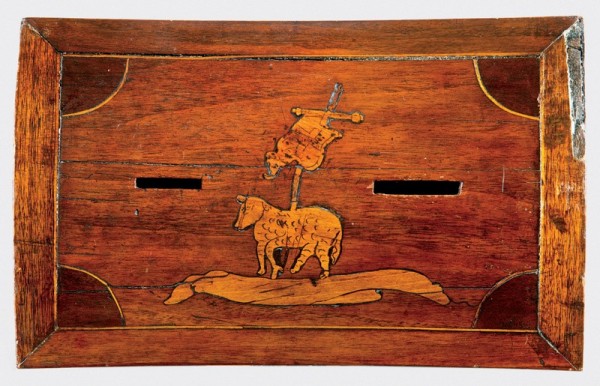
Detail of the lid of the chest illustrated in fig. 23. (Photo, Gavin Ashworth.)
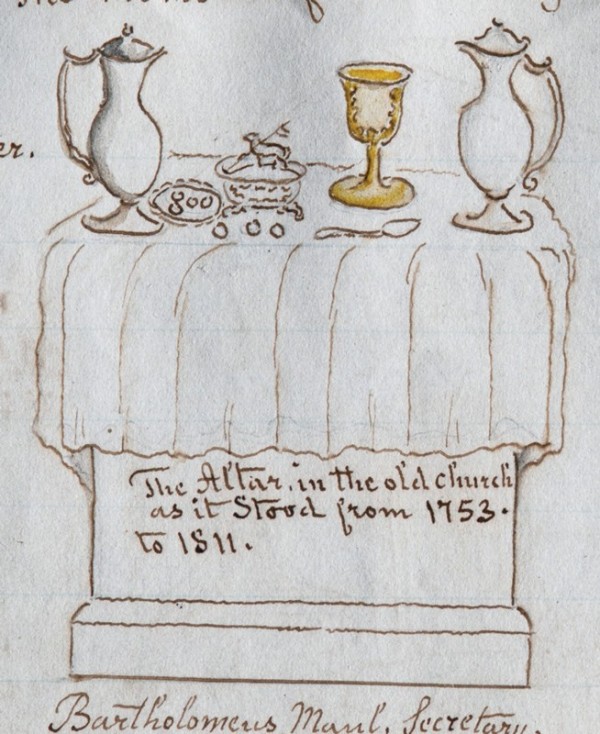
Lewis Miller, drawing of the altar in Christ Lutheran Church, York, Pennsylvania, ca. 1811. (Courtesy, York County Heritage Trust; photo, Gavin Ashworth.)
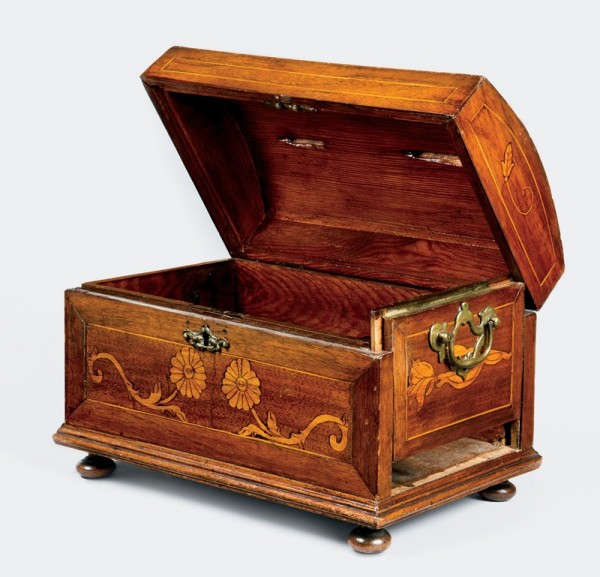
End view of the chest illustrated in fig. 23. (Photo, Gavin Ashworth.)
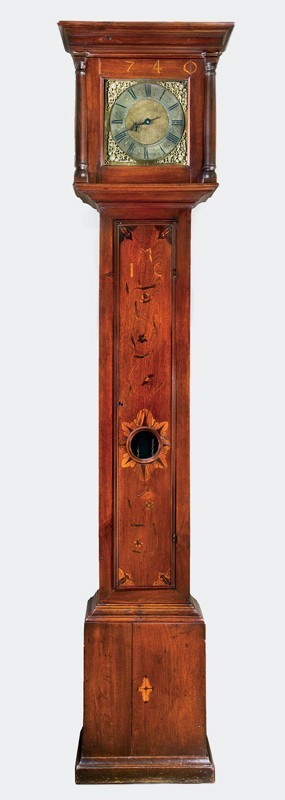
Tall-case clock, Philadelphia area, Pennsylvania, 1740. Walnut and mixed-wood inlay with tulip poplar and red oak. H. 90", W. 20 1/2", D. 13". (Courtesy, Rocky Hill Collection; photo, Gavin Ashworth.) The movement is probably British and dates 1680–1700.
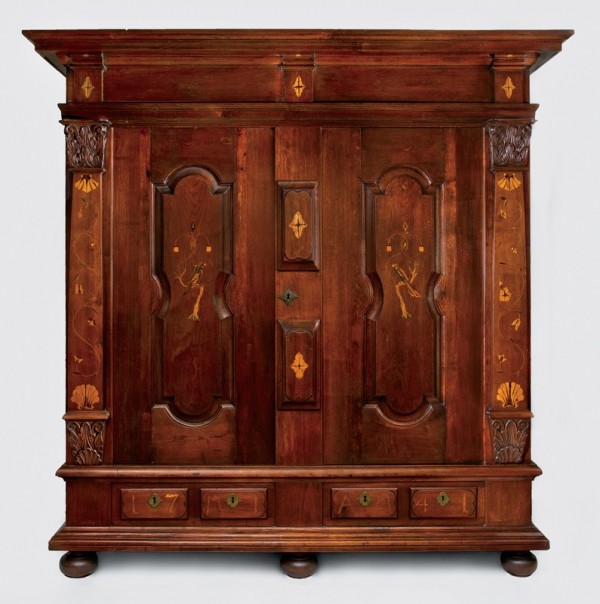
Schrank, Philadelphia area, Pennsylvania, 1741. Walnut and mixed-wood inlay with yellow pine, tulip poplar, walnut, and oak. H. 76", W. 75 1/4", D. 27 1/2". (Courtesy, Rocky Hill Collection; photo, Gavin Ashworth.)

Detail of an inlaid pilaster on the schrank illustrated in fig. 28. (Photo, Gavin Ashworth.)
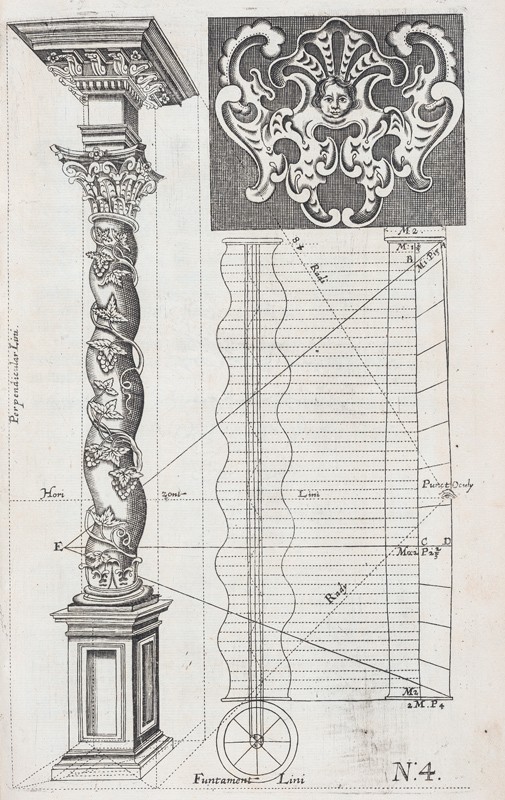
Detail of a column with carved floral decoration, in Georg Caspar Erasmus, Seulen-Buch Oder Gründlicher Bericht von der Fünff Ordnungen der Architectur-Kunst welche solche von Marco Vitruvio, Jacobo Barrozzio, Hans Blumen C. und Andern . . . (Nuremberg, 1688). (Courtesy, Winterthur Library, Printed Book and Periodical Collection; photo, James Schneck.)
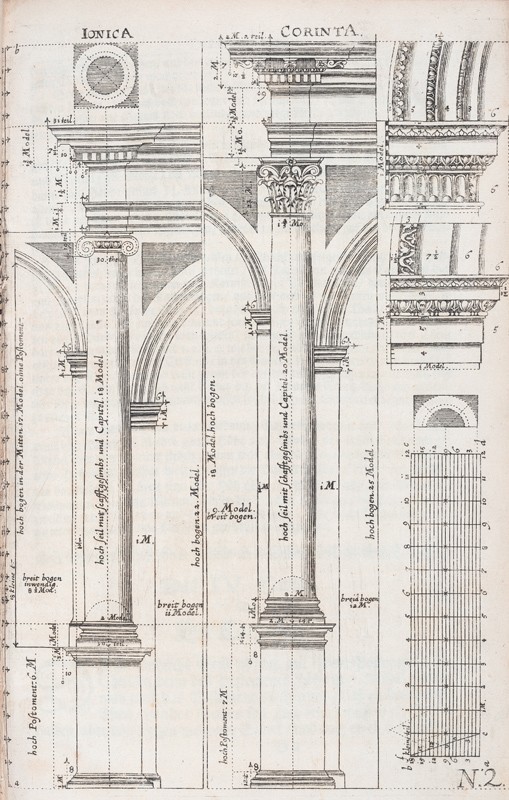
Detail of the Ionic and Corinthian orders, in Georg Caspar Erasmus, Seulen-Buch Oder Gründlicher Bericht von der Fünff Ordnungen der Architectur-Kunst welche solche von Marco Vitruvio, Jacobo Barrozzio, Hans Blumen C. und Andern . . . (Nuremberg, 1688). (Courtesy, Winterthur Library, Printed Book and Periodical Collection; photo, James Schneck.)
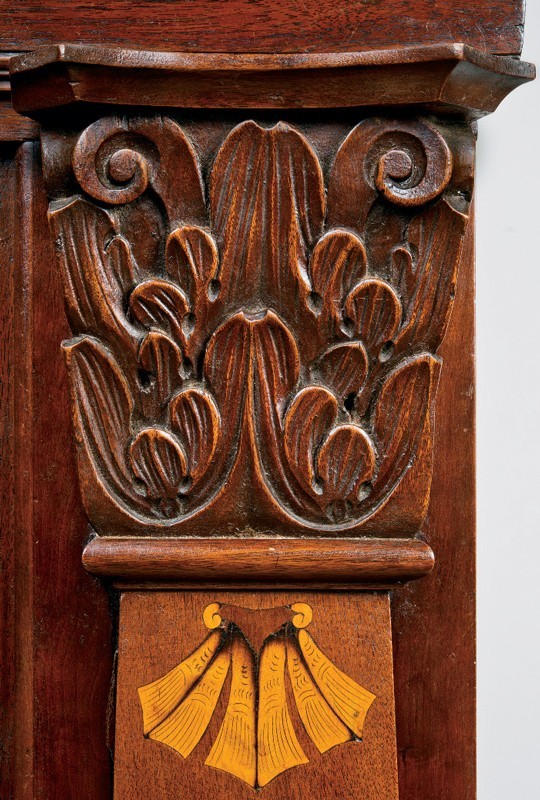
Detail of the inlaid shell and carved capital on the schrank illustrated in fig. 28. (Photo, Gavin Ashworth.)
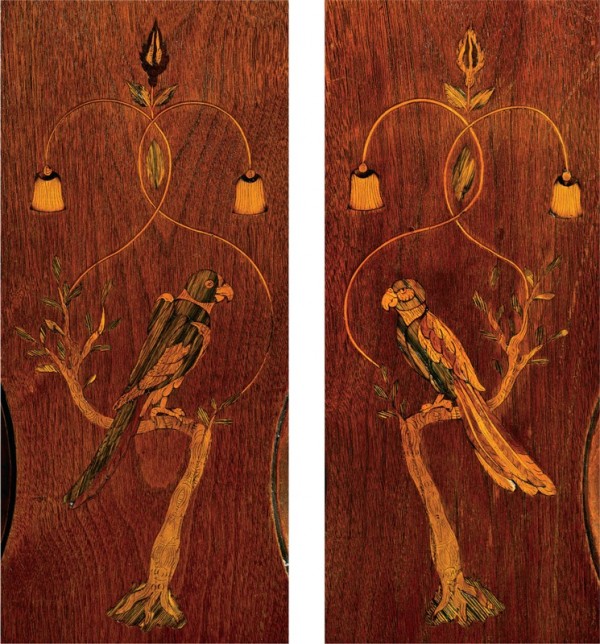
Details of the inlaid birds on the schrank illustrated in fig. 28. (Photo, Gavin Ashworth.)
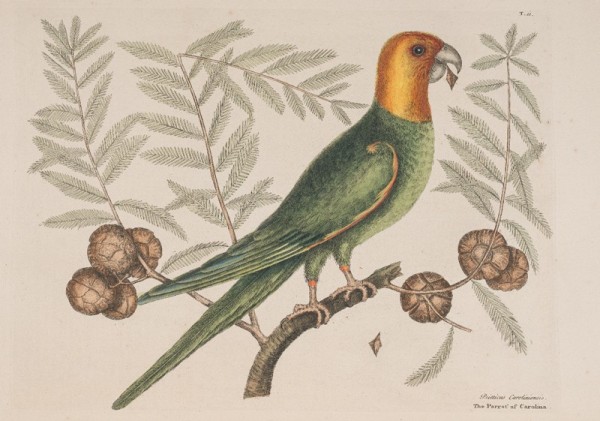
The Parrot of Carolina, in Mark Catesby, Natural History of Carolina, Florida and the Bahama Islands (London, 1729–1747). (Courtesy, Winterthur Library, Printed Book and Periodical Collection; photo, James Schneck.)
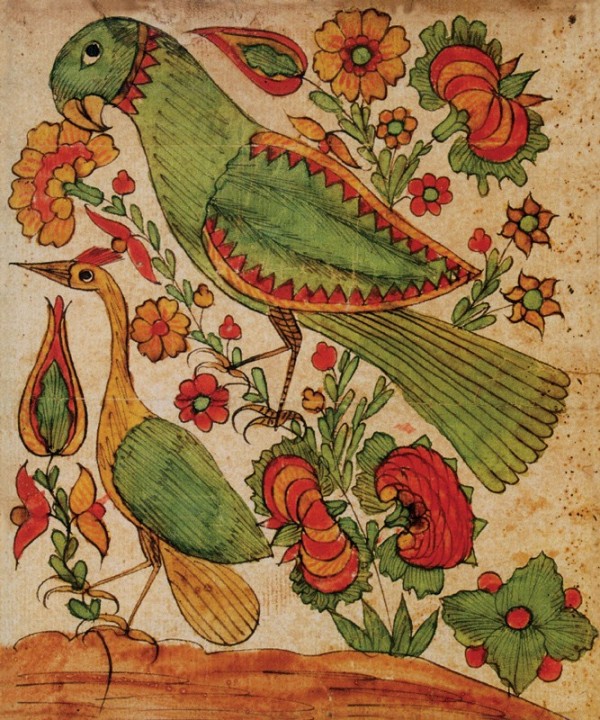
Drawing of a parrot, bird, and flowers, attributed to Henrich Otto, Lancaster County, Pennsylvania, ca. 1780. Watercolor and ink on laid paper. 7 7/8" x 6 1/2". (Collection of Dr. and Mrs. Donald M. Herr.)
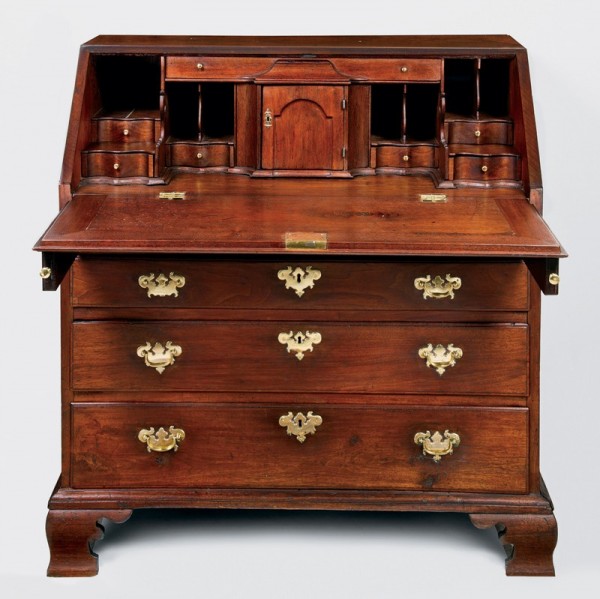
Desk, Philadelphia area, Pennsylvania, ca. 1750. Walnut and mixed-wood inlay with walnut and tulip poplar. H. 42 3/4", W. 42", D. 21 1/4". (Private collection; photo, Gavin Ashworth.)
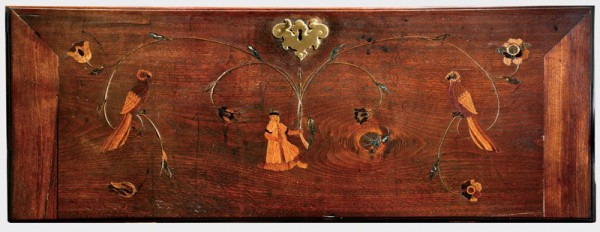
Lid of the desk illustrated in fig. 36. (Photo, Gavin Ashworth.)
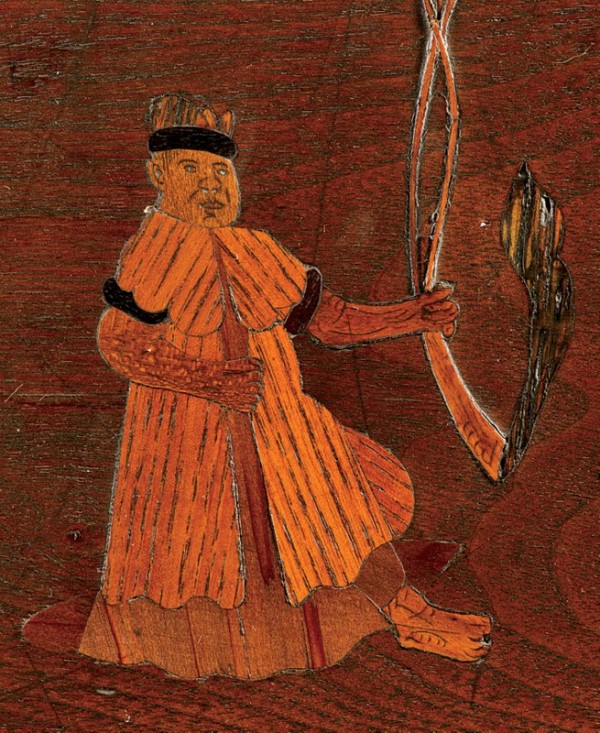
Detail of the figure inlaid on the desk illustrated in fig. 36. (Photo, Gavin Ashworth.)
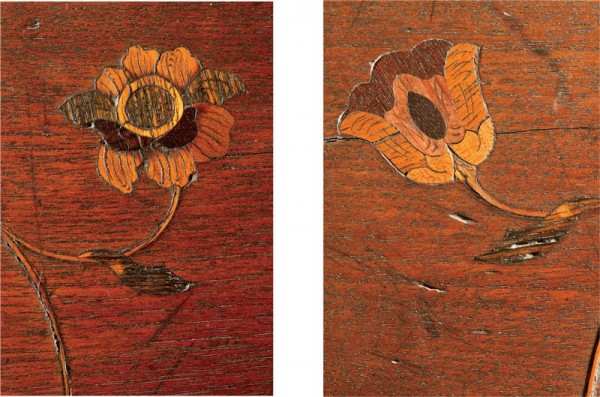
Details showing two flowers inlaid on the desk illustrated in fig. 36. (Photo, Gavin Ashworth.)
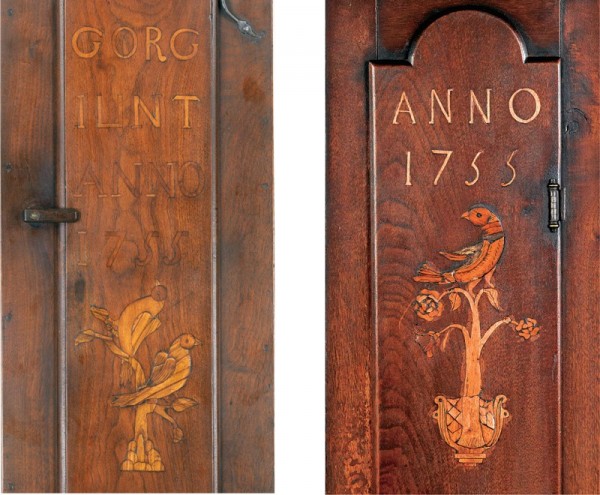
Details showing the birds inlaid on the pendulum doors of a clock made for George Yunt, Ephrata, Lancaster County, Pennsylvania, 1755 (left), and a clock, Lancaster County, Pennsylvania, 1755 (right). (Courtesy, Earle H. and Yvonne Henderson; photo, Winterthur Museum, Laszlo Bodo [left]; courtesy, Pook & Pook [right].)
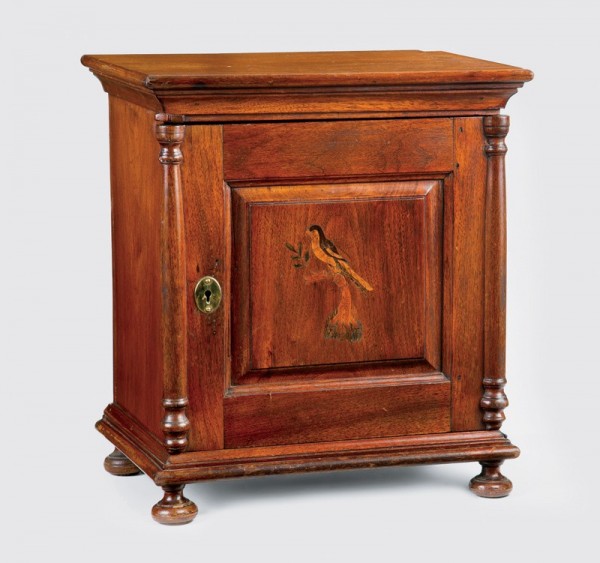
Valuables cabinet or spice box, Philadelphia area, Pennsylvania, ca. 1740. Walnut and mixed-wood inlay with walnut and pine. H. 16", W. 14 1/4", D. 10 1/8". (Private collection; photo, Gavin Ashworth.)
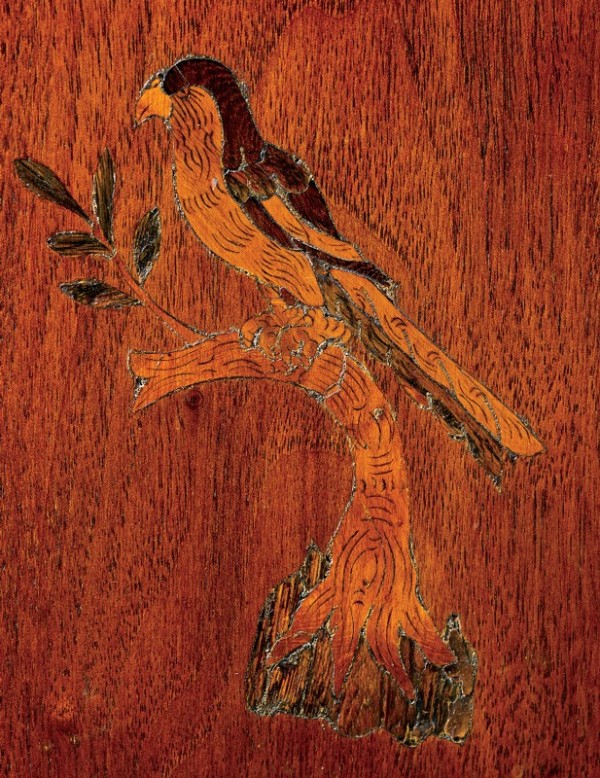
Detail of the inlay on the cabinet illustrated in fig. 41. (Photo, Gavin Ashworth.)
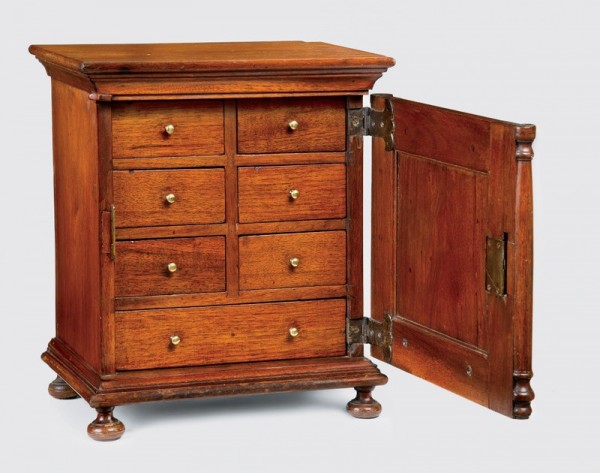
Detail of the interior of the cabinet illustrated in fig. 41. (Photo, Gavin Ashworth.)
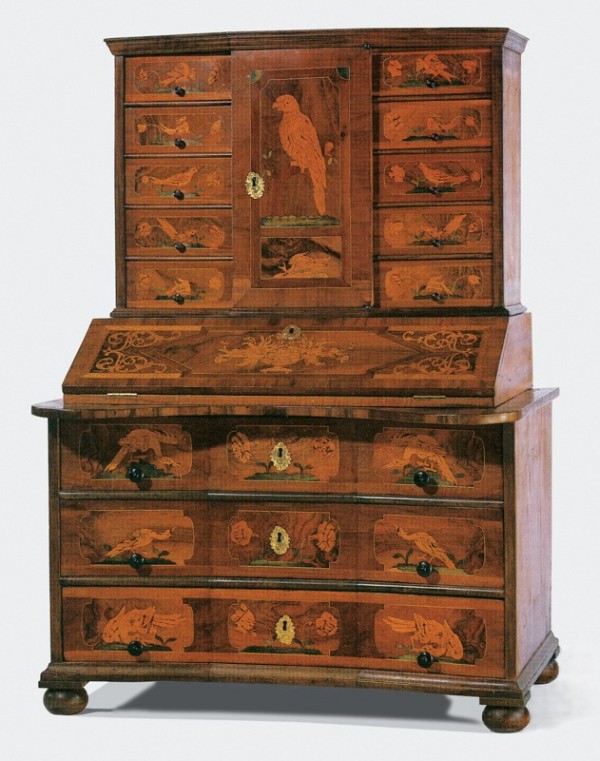
Desk-and-bookcase, Kirchheim unter Teck, Baden-Württemberg, Germany, 1720–1730. Walnut, maple, and plum with poplar and yew. H. 62 1/2", W. 44 1/4", D. 30". (Courtesy, Landesmuseum Württemberg, Stuttgart, 1977/106.)
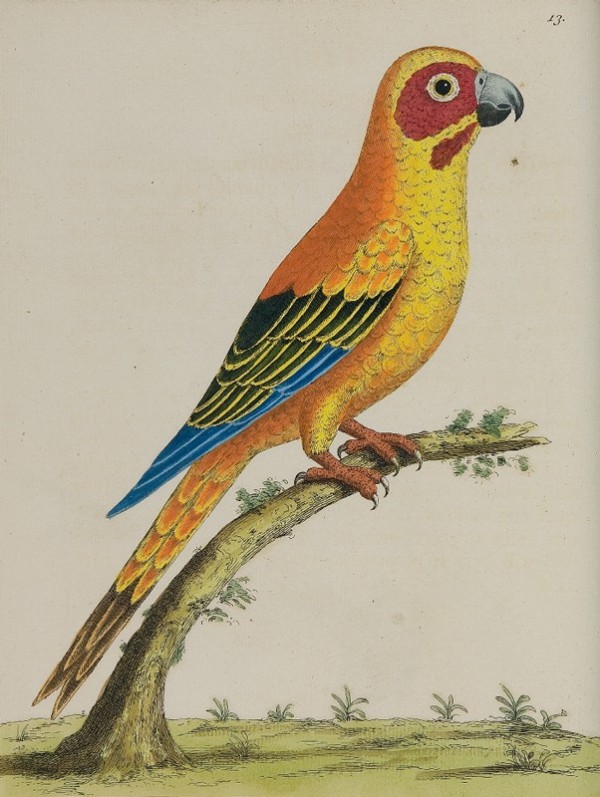
A Parroqueet from Angola, in Eleazar Albin, A Natural History of Birds, vol. 3 (London, 1740). (Courtesy, Teylers Museum.)
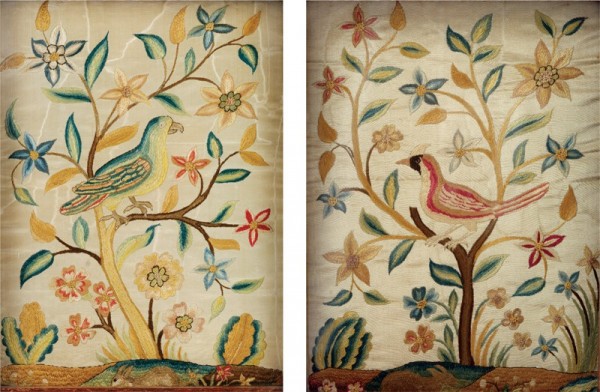
Pair of silkwork pictures, by Sarah Wistar, Philadelphia, 1752. Silk on silk moiré. 9 1/2" x 7" (unframed). (Courtesy, Winterthur Museum.)

Tall-case clock with movement by Augustin Neisser, Philadelphia area, Pennsylvania, ca. 1745. Walnut and mixed-wood inlay with tulip poplar and pine. H. 93 1/2", W. 22 1/2", D. 12 1/2". (Courtesy, Historical Society of Berks County, Reading, Pa.; photo, Gavin Ashworth.) The feet, waist door hinges, and bottom section of waist molding are replaced.

Tall-case clock with movement by Joseph Wills, Philadelphia, Pennsylvania; case, Philadelphia area, Pennsylvania, ca. 1745. Walnut and mixed-wood inlay with tulip poplar and pine. H. 86", W. 22 1/4", D. 12". (Courtesy, York County Heritage Trust; photo, Gavin Ashworth.) The waist door hinges are replaced.
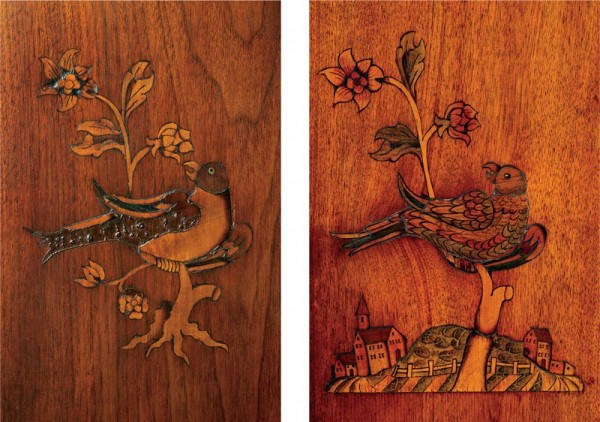
Details of the inlaid birds on the clocks illustrated in fig. 47 (left) and fig. 48 (right). (Photo, Gavin Ashworth.)
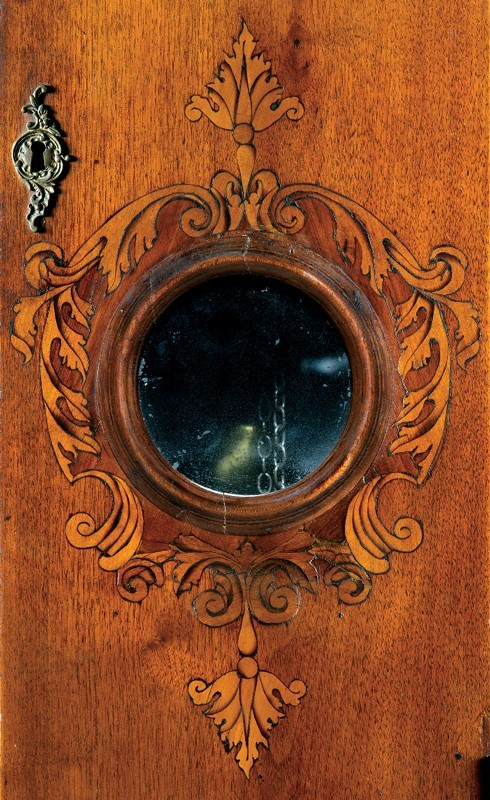
Detail of the cartouche on the clock illustrated in fig. 48. (Photo, Gavin Ashworth.)
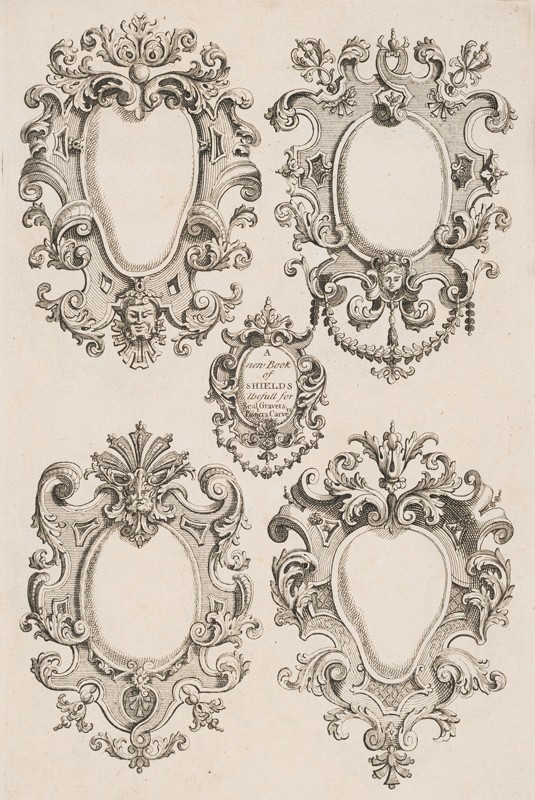
Designs for cartouches in A Compleat Book of Ornaments (London, ca. 1740). (Courtesy, Winterthur Library, Printed Book and Periodical Collection; photo, James Schneck.)
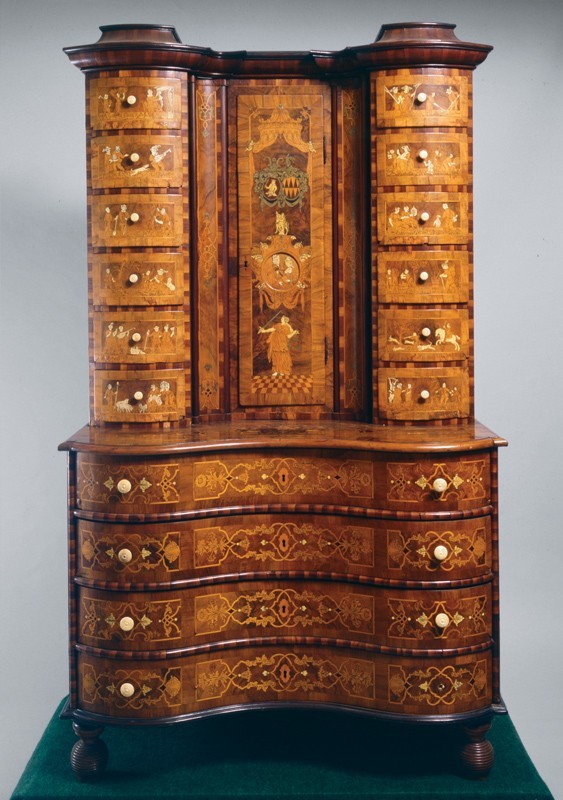
Johann Georg Wahl, tabernakelschrank Osthofen, Germany, 1743. Oak with maple and walnut veneer and mixed-wood, ivory, and ebony inlay. H. 81 1/2", W. 47", D. 26". (Courtesy, Newark Museum; photo, Robert Crabb, 1929)
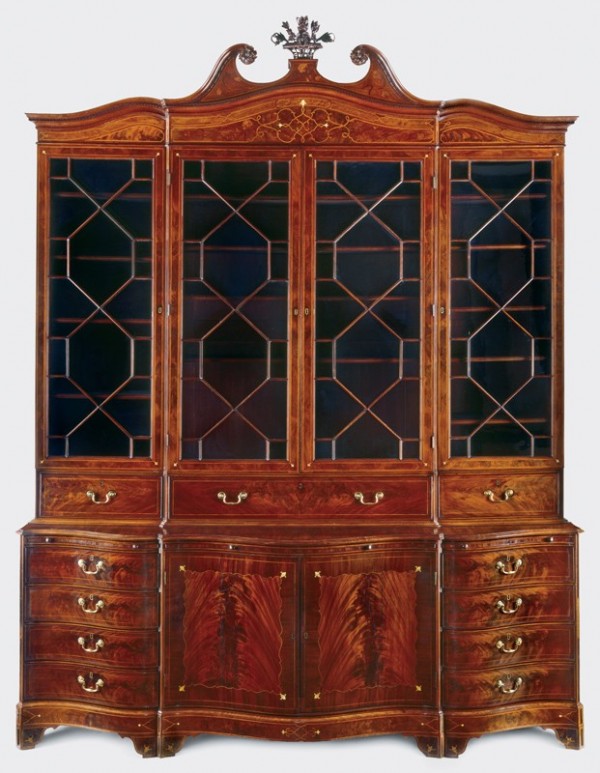
Library bookcase attributed to Martin Pfeninger, Charleston, South Carolina, 1770–1775. Mahogany, mahogany and burl walnut veneer, mixed-wood inlays and ivory with cypress. H. 128 3/4", W. 99", D. 20 1/2". (Courtesy, Charleston Museum; photo, Museum of Early Southern Decorative Arts, Gavin Ashworth.)

Tall-case clock with movement by George Miller and case by William Bomberger, Germantown, Pennsylvania, 1765. Walnut with tulip poplar, and yellow pine. H. 98", W. 20 3/4", D. 11 1/4". (Private collection; photo, Winterthur Museum, Laszlo Bodo.)
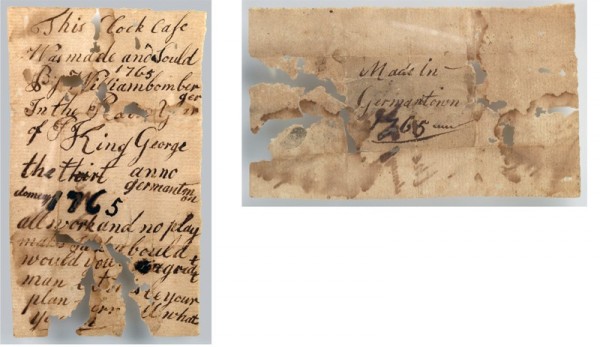
Details of the label inside the clock illustrated in fig. 54. (Photo, Laszlo Bodo.)
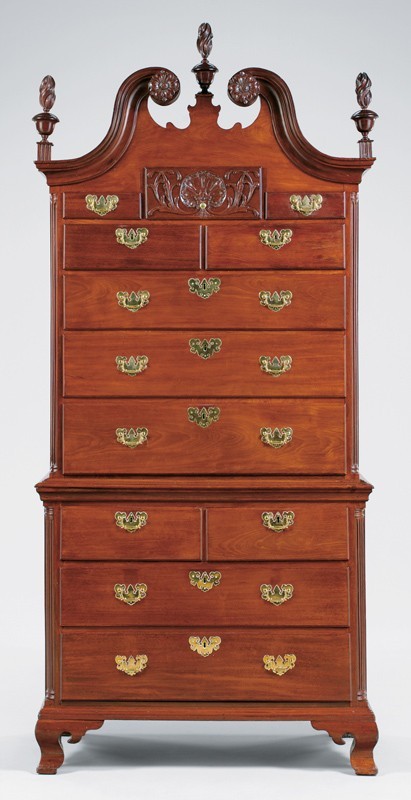
Jonathan Shoemaker, chest-on-chest, Philadelphia, Pennsylvania, ca. 1765. Walnut with tulip poplar and white cedar. H. 97", W. 44", D. 23". (Courtesy, © Christie’s Images Ltd.)
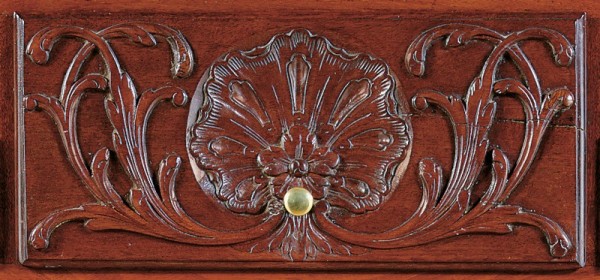
Detail of the carving on the chest-on-chest illustrated in fig. 56.
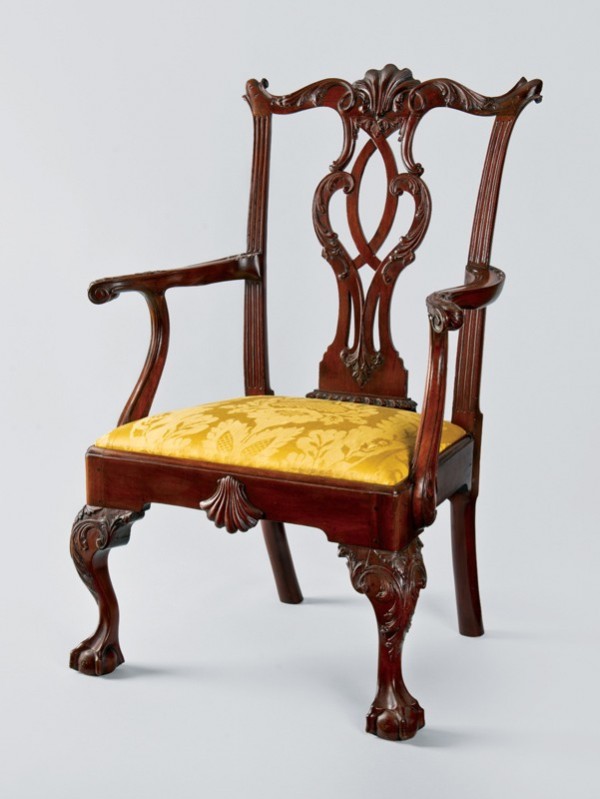
Armchair, Philadelphia, Pennsylvania, ca. 1770. Mahogany. H. 39 3/4", W. 29", D. 22". (Courtesy, Philadelphia Museum of Art, bequest of William W. Doughten, 1956; photo, Gavin Ashworth.) The splat has been altered by the removal of a carved tassel.
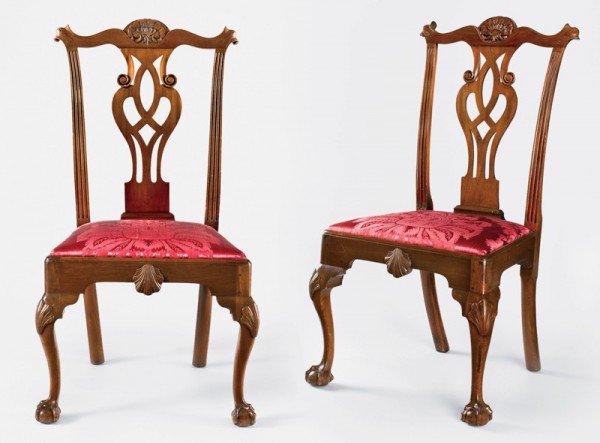
Pair of side chairs attributed to Leonard Kessler, Philadelphia, Pennsylvania, 1763. Mahogany. H. 40 1/2", W. 21 1/2", D. 17". (Private collection; photo, Gavin Ashworth.)
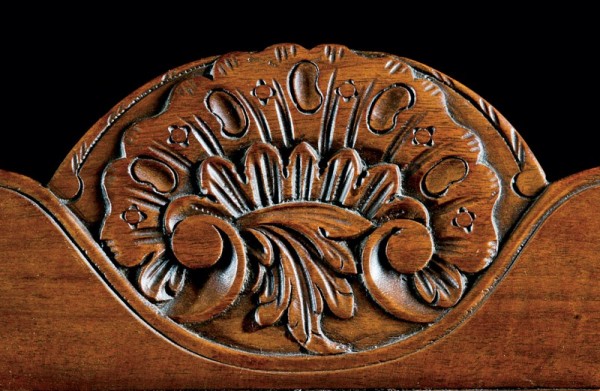
Detail of the cartouche on the crest of one of the chairs illustrated in fig. 59. (Photo, Gavin Ashworth.)
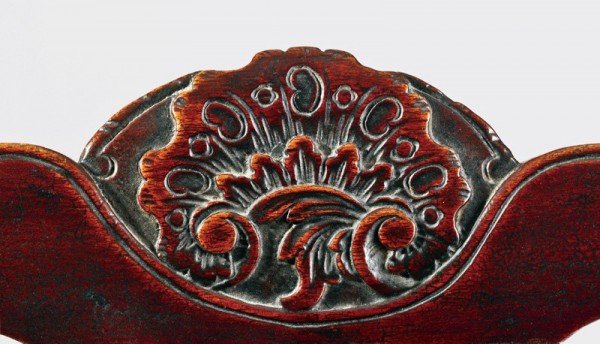
Detail of the cartouche on the chair illustrated in fig. 62. (Photo, Gavin Ashworth.)
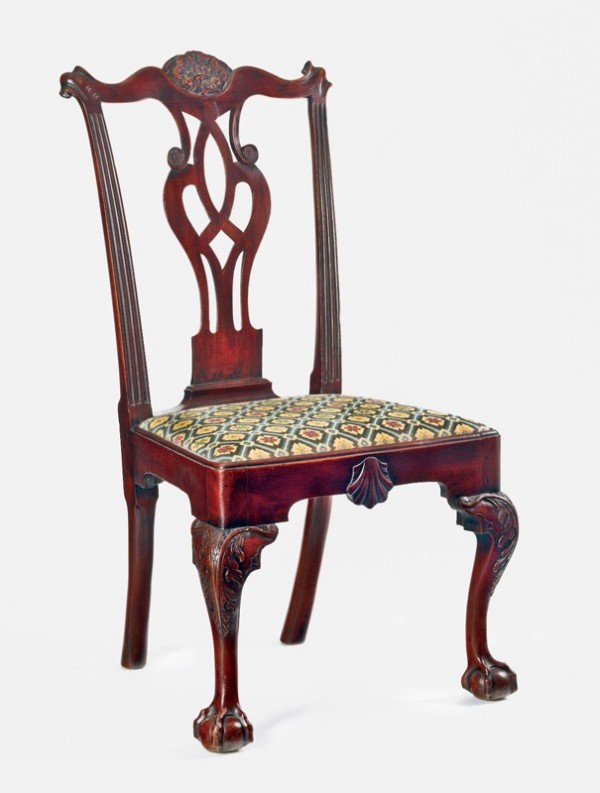
Side chair, Philadelphia, Pennsylvania, ca. 1765. Mahogany. H. 41", W. 21 1/2", D. 15 1/2". (Courtesy, Leslie Miller and Richard Worley; photo, Gavin Ashworth.) The carving is attributed to Nicholas Bernard.
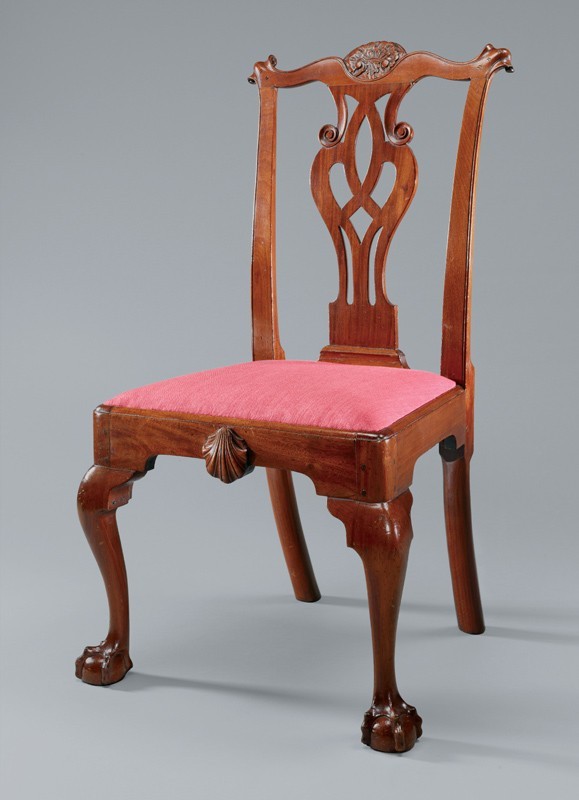
Side chair attributed to Leonard Kessler, Philadelphia, Pennsylvania, ca. 1765. Mahogany. H. 40 1/2", W. 21 1/2", D. 17". (Courtesy, Yale University Art Gallery, Mabel Brady Garvan Collection.)
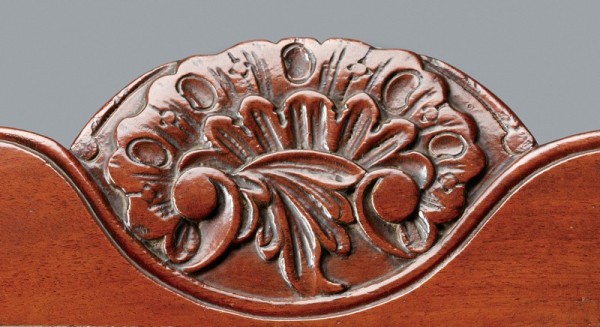
Detail of the cartouche on the chair illustrated in fig. 63.
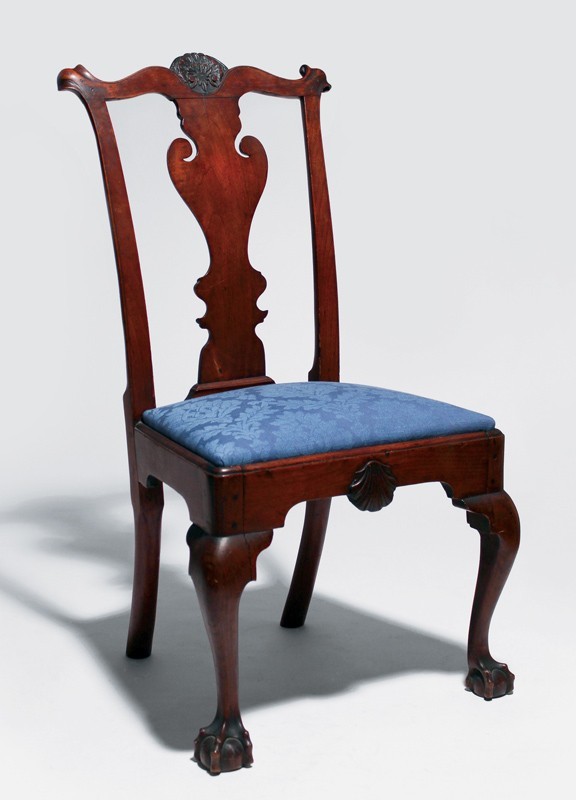
Side chair attributed to Leonard Kessler, Philadelphia, Pennsylvania, ca. 1765. Mahogany. H. 41", W. 21", D. 16 1/2". (Courtesy, H. L. Chalfant.)
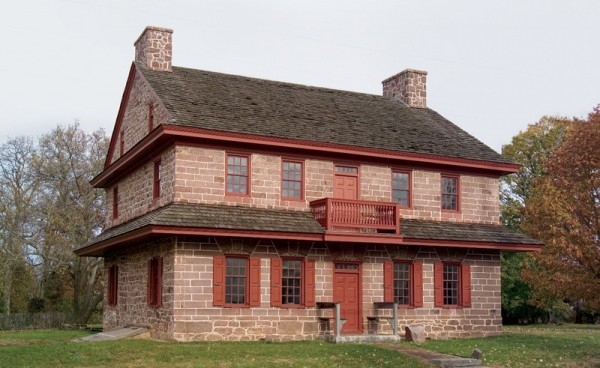
House of Henry and Mary Muhlenberg, Trappe, Montgomery County, Pennsylvania, built ca. 1750–1755. (Photo, Glenn Holcombe.)
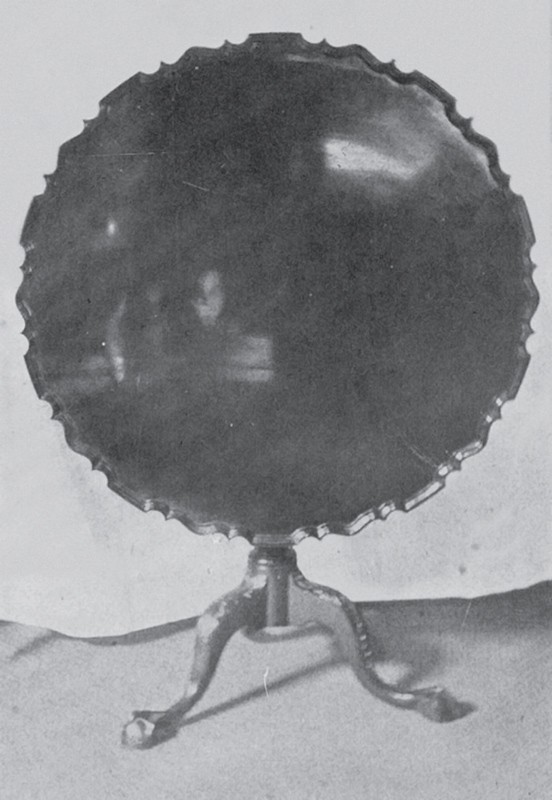
Tea table, Philadelphia, Pennsylvania, ca. 1766. Mahogany. Dimensions unrecorded. (Photo reproduced from Henrietta Meier Oakley and John Christopher Schwab, Muhlenberg Album [New Haven, Conn.: the authors, 1910].)
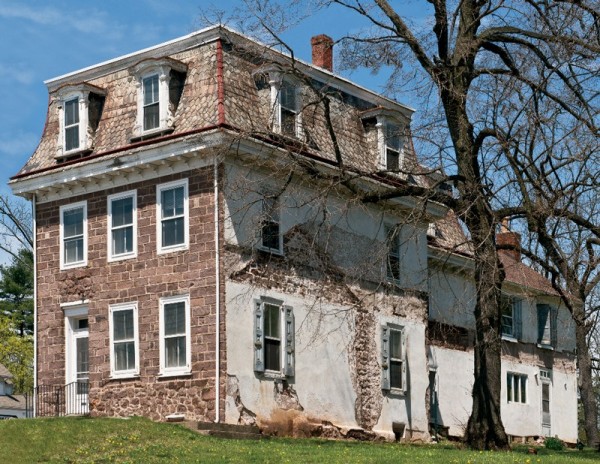
House of Frederick Muhlenberg, Trappe, Montgomery County, Pennsylvania, built ca. 1763. (Courtesy, The Speaker’s House; photo, Gavin Ashworth.) The roofline of the store is visible on the right side; the mansard roof is a later addition.
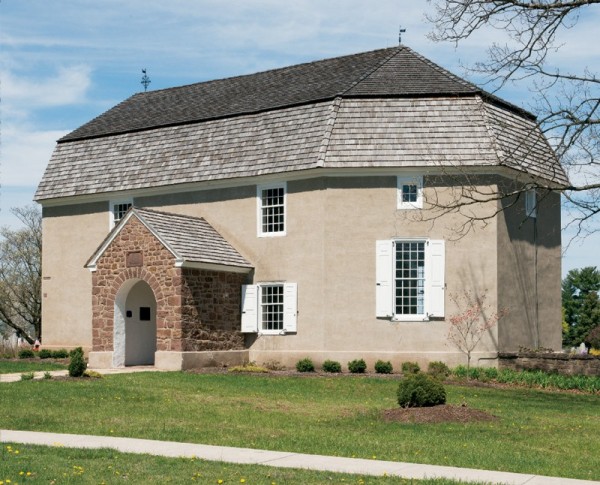
Augustus Lutheran Church, Trappe, Montgomery County, Pennsylvania, built 1743. (Photo, Gavin Ashworth.) The stucco is a later addition.
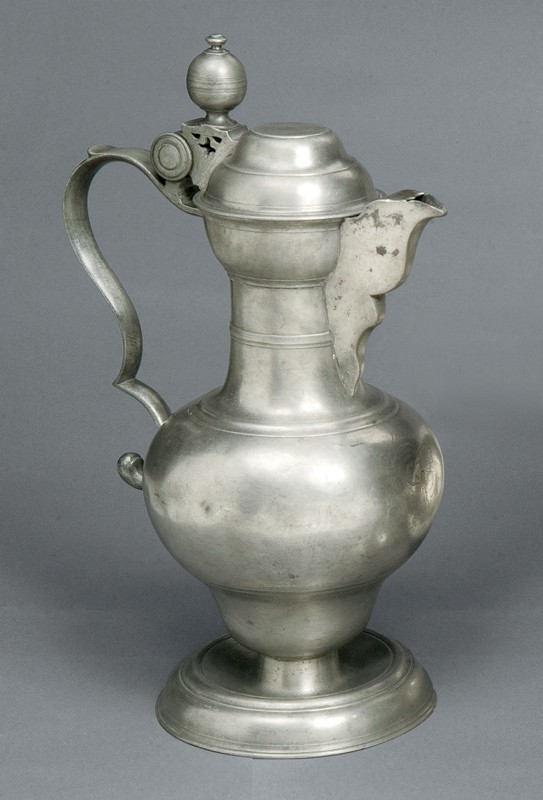
Communion flagon attributed to Johann Philip Alberti, Philadelphia, Pennsylvania, ca. 1760. Pewter. H. 13". (Courtesy, Augustus Lutheran Church; photo, Glenn Holcombe.)
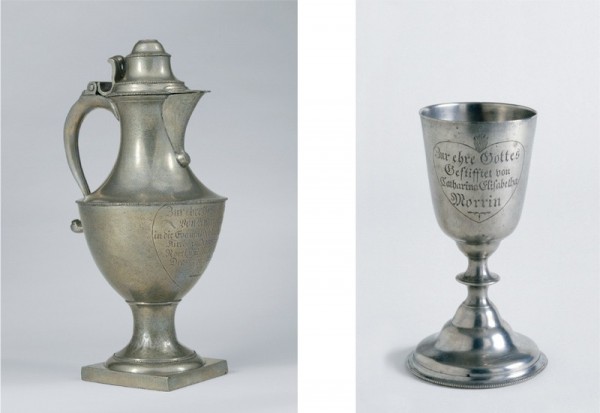
Communion flagon and chalice attributed to William Will, Philadelphia, Pennsylvania, 1795. Pewter. H. 13 3/4" (flagon), 7 7/8" (chalice). (Courtesy, Yale University Art Gallery, The Dobson Foundation; Friends of American Arts Acquisition Fund; Mr. and Mrs. Frank J. Coyle, LL.B. 1943, Fund, Peter B. Cooper, B.A. 1960, LL.B. 1964, M.U.S. 1965, and Field C. McIntyre American Decorative Arts Acquisition Fund; Friends of American Arts Decorative Arts Acquisition; and Lisa Koenigsberg, M.A. 1981, M.Phil. 1984, Ph.D. 1987, and David Becker, B.A. 1979 Fund [flagon]; Winterthur Museum [chalice].)
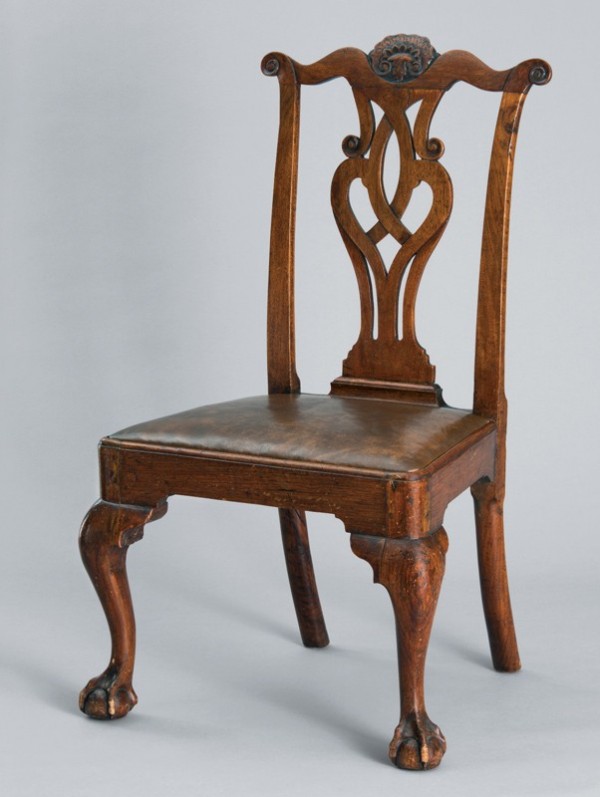
Side chair, Philadelphia, Pennsylvania, ca. 1760. Walnut with hard pine slip seat frame. H. 40 1/2", W. 24", D. 21". (Private collection; photo, Colonial Williamsburg Foundation, Craig McDougal.)
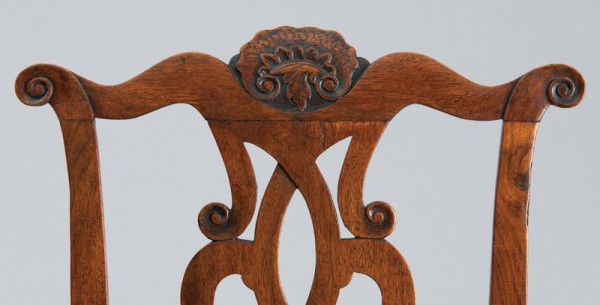
Detail of the crest on the chair illustrated in fig. 72. (Photo, Craig McDougal.)
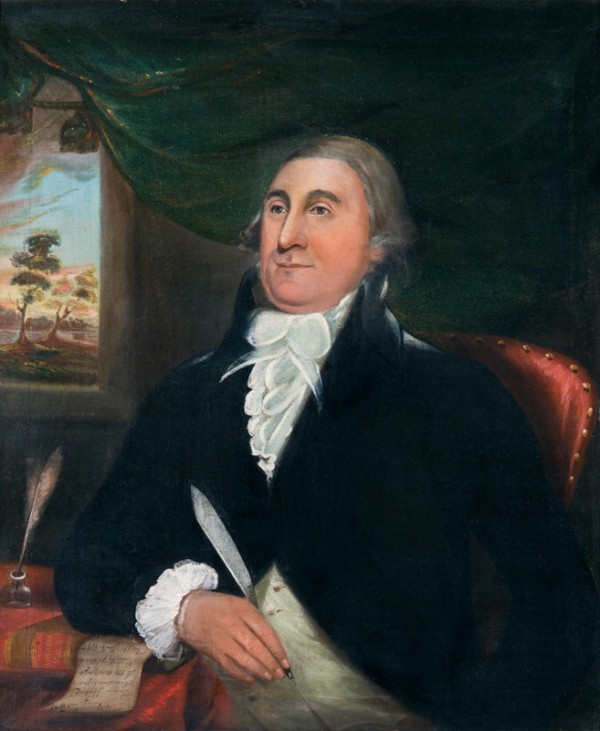
Joseph Hiester, attributed to Jacob Witman, Reading, Berks County, Pennsylvania, 1795. Oil on canvas. 36" x 30 1/2". (Courtesy, Historical Society of Berks County, Reading, Pa.; photo, Gavin Ashworth.)
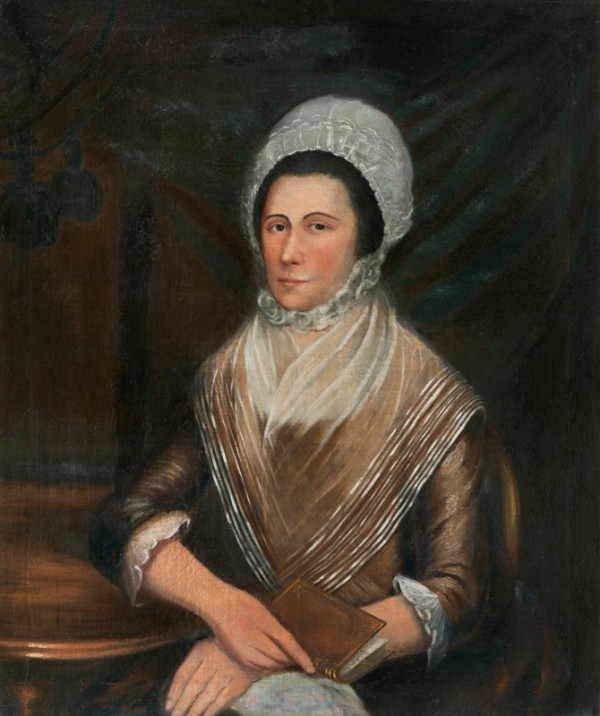
Elizabeth Hiester, attributed to Jacob Witman, Reading, Berks County, Pennsylvania, 1795. Oil on canvas. 36" x 30". (Courtesy, Historical Society of Berks County, Reading, Pa.; photo, Gavin Ashworth.)
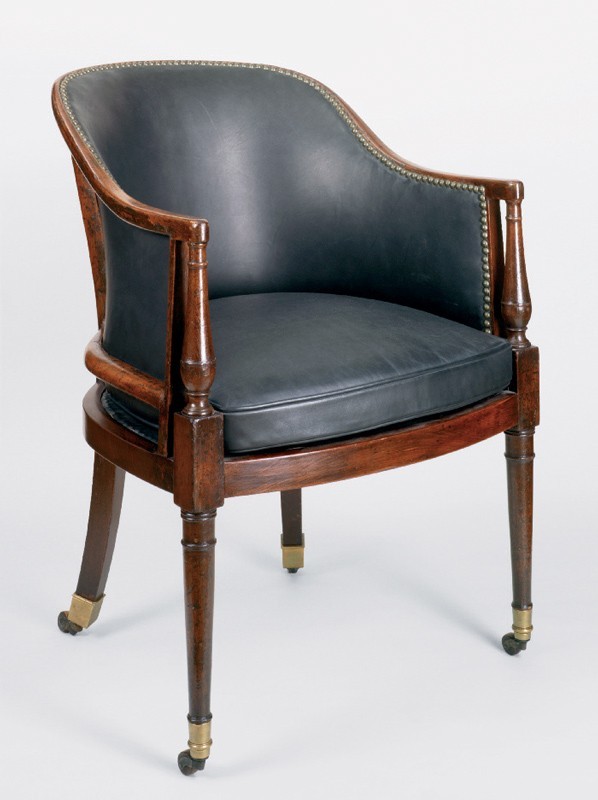
Bergère attributed to George Bright, Boston, Massachusetts, 1797. Mahogany with white pine. H. 33 1/2", W. 24", D. 23 3/4". (Courtesy, Winterthur Museum; photo, Laszlo Bodo.)

Tea table, probably Reading, Berks County, Pennsylvania, ca. 1775. Walnut. H. 28 1/8", Diam. 33 7/8".(Historical Society of Berks County, Reading, Pa.; photo, Gavin Ashworth.)
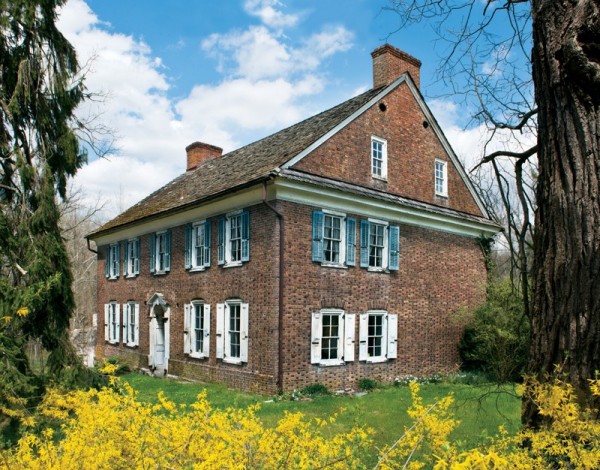
House of Daniel Hiester, Montgomery County, Pennsylvania, built 1757. (Photo, Gavin Ashworth.)
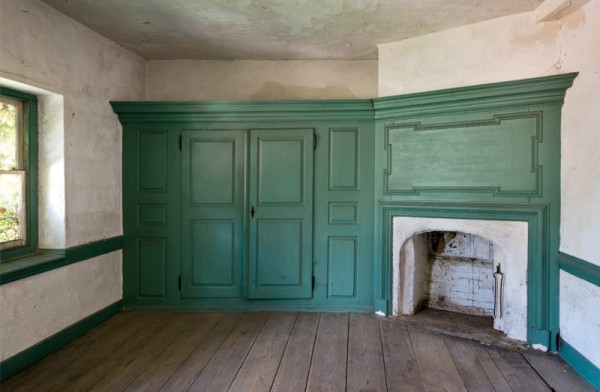
Paneled wall with built-in schrank and corner fireplace in the Daniel Hiester House. (Photo, Gavin Ashworth.)
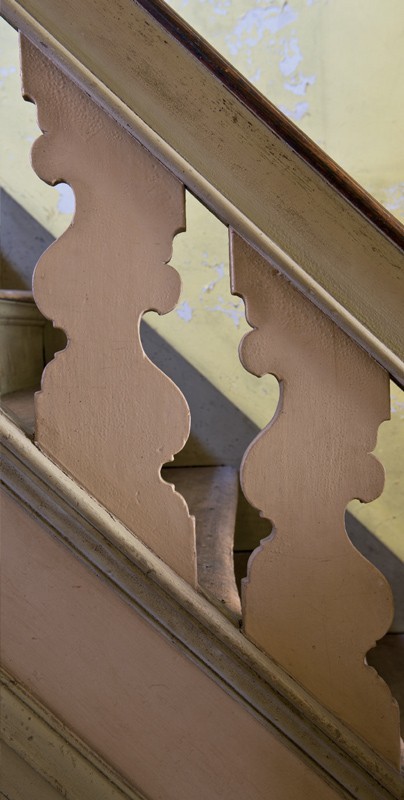
Detail of the staircase in the Daniel Hiester House. (Photo, Gavin Ashworth.)
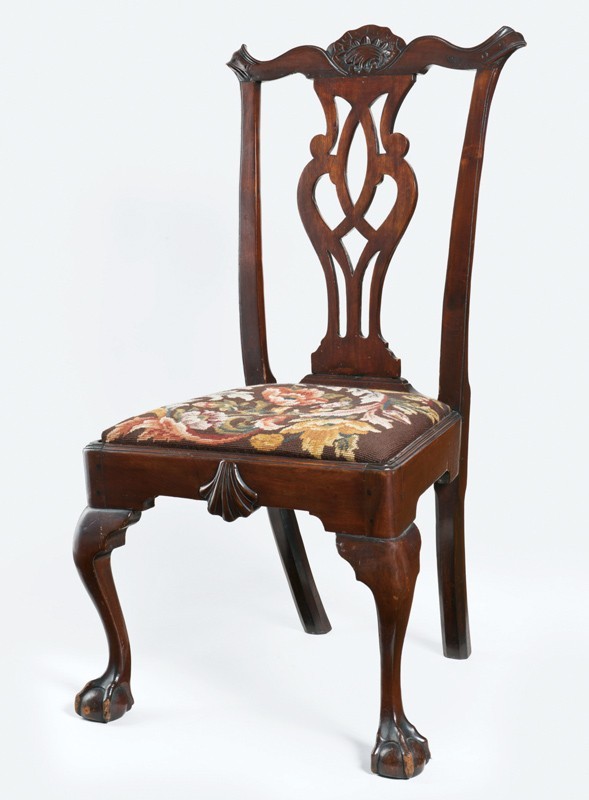
Side chair, Reading, Berks County, Pennsylvania, ca. 1765. Walnut. H. 39 1/2", W. 21 3/4", D. 20". (Courtesy, Historical Society of Berks County, Reading, Pa.; photo, Gavin Ashworth.)
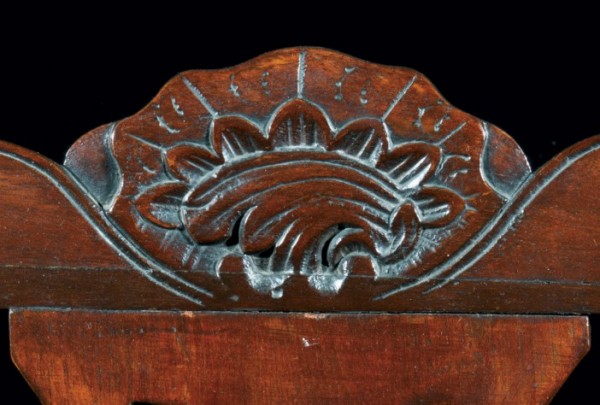
Detail of the cartouche on the chair illustrated in fig. 81. (Photo, Gavin Ashworth.)
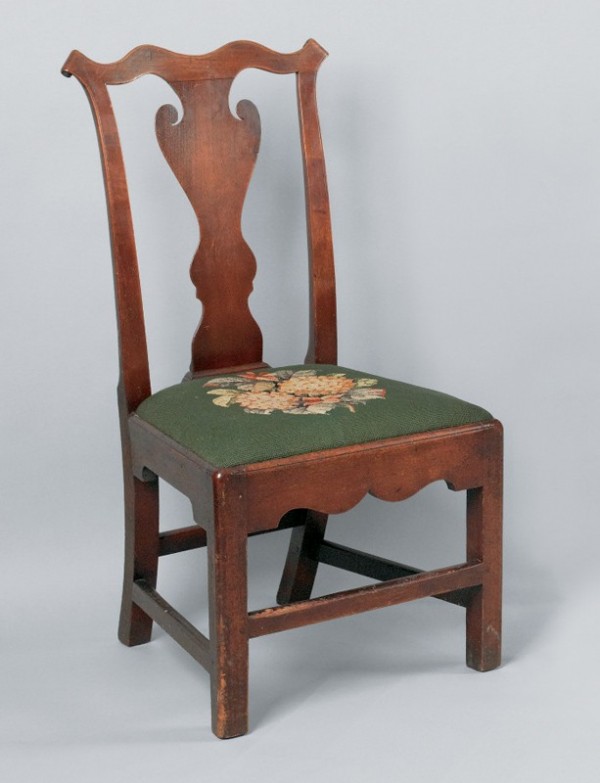
Side chair, Berks County, Pennsylvania, ca. 1770. (Courtesy, Pook & Pook.)
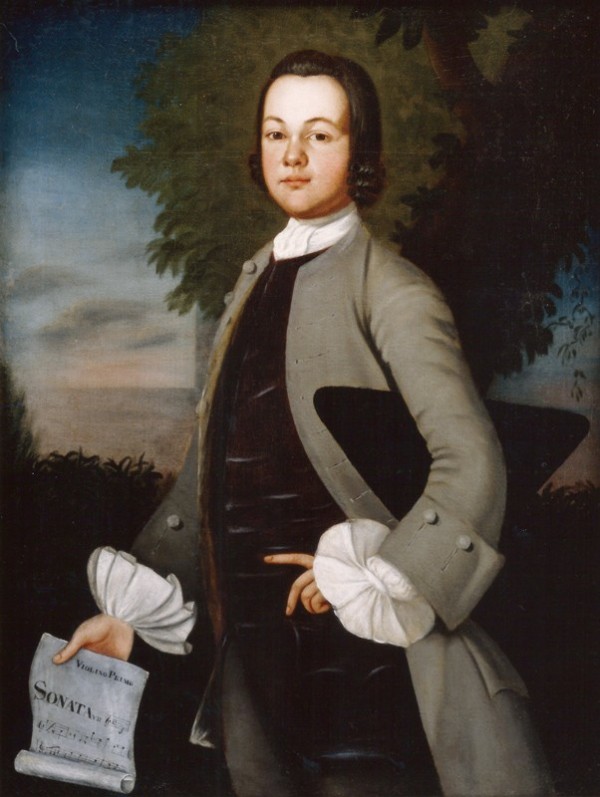
John Meng, John Meng, Germantown, Pennsylvania, ca. 1750. Oil on canvas. 43 1/4" x 32 1/2". (Courtesy, Philadelphia History Museum at the Atwater Kent, The Historical Society of Pennsylvania Collection.)
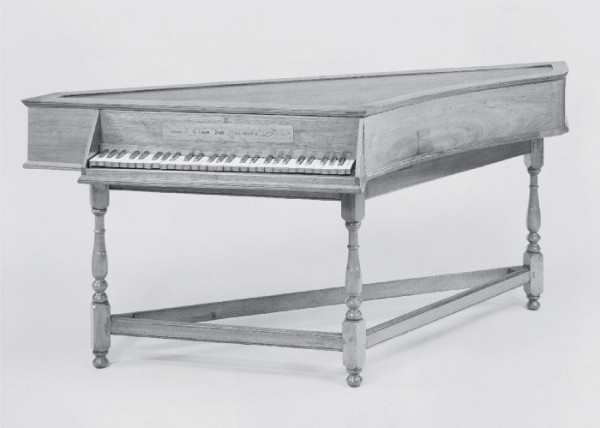
Johann Gottlob Klemm, spinet, Philadelphia, Pennsylvania, 1739. Walnut, maple, yellow pine, and white cedar. H. 33 1/2", W. 73 1/4", D. 27". (Image copyright © Metropolitan Museum of Art, Rogers Fund, 1944; image source, Art Resource, NY.) The keyboard is replaced.
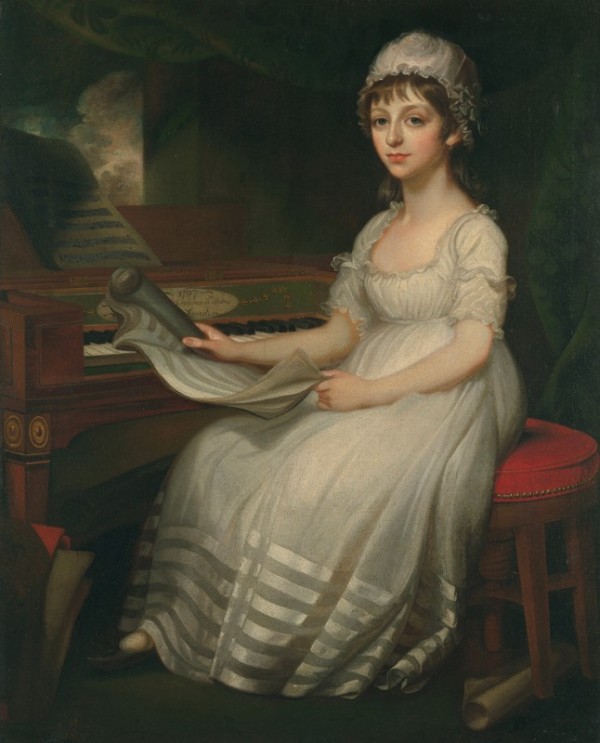
Mather Brown, Portrait of a Young Woman, Boston, Massachusetts, 1801. Oil on canvas. 50" x 40 1/4". (Image copyright © Metropolitan Museum of Art, gift of Caroline Newhouse, 1965; image source, Art Resource, NY.)
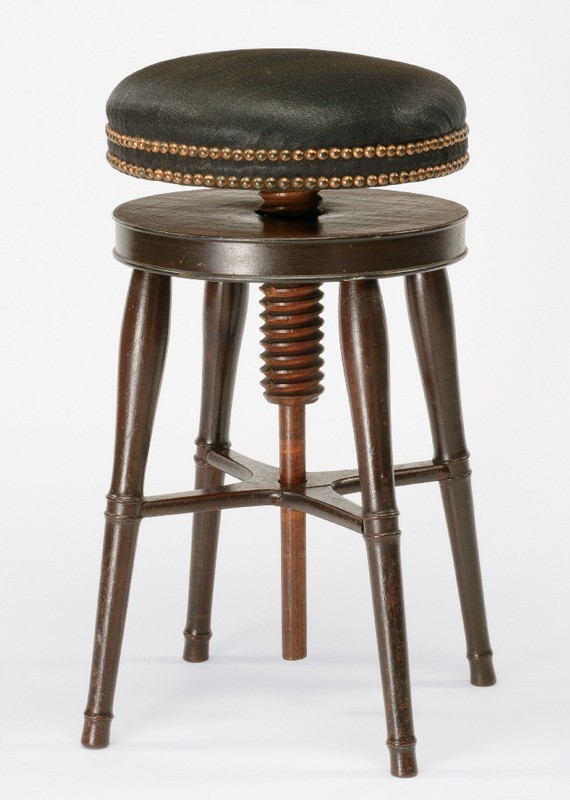
Music stool, possibly Pennsylvania, ca. 1810. Mahogany, tulip poplar, hickory (screw); paint. (Courtesy, Winterthur Museum; photo, James Schneck.) The black horsehair upholstery and brass nails are original.
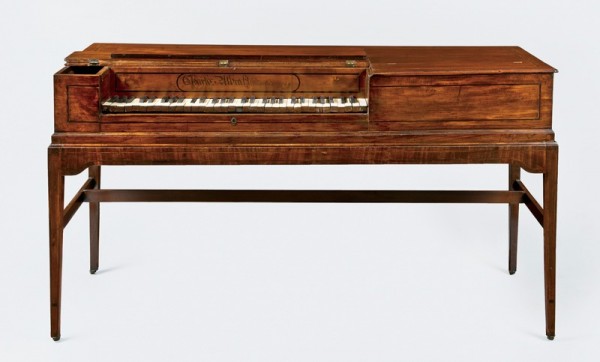
Charles Albrecht, square piano, Philadelphia, Pennsylvania, 1789. Mahogany, mahogany and satinwood veneer, black mastic, ivory, ebony, and brass. H. 31 1/2", W. 61 3/4", D. 21 1/2". (Courtesy, Philadelphia History Museum at the Atwater Kent, The Historical Society of Pennsylvania Collection; photo, Gavin Ashworth.)

Detail of the nameboard on the piano illustrated in fig. 88. (Photo, Gavin Ashworth.)

Detail of the letter “C” on the nameboard of the piano illustrated in fig. 88. (Photo, Gavin Ashworth.)

Detail of the nameboard on a square piano by Charles Albrecht, Philadelphia, Pennsylvania, ca. 1790. Mahogany, mahogany and satinwood veneer, and black mastic (infill). (Courtesy, National Museum of American History, Smithsonian Institution.)
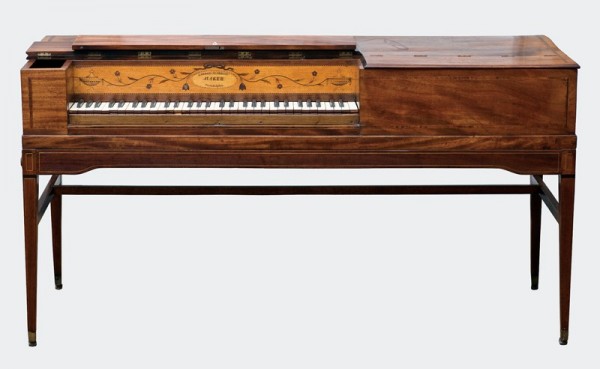
Charles Albrecht, square piano, Philadelphia, Pennsylvania, ca. 1790. Mahogany, mahogany and satinwood veneer, mixed-wood inlay, ivory, ebony, and brass. H. 33", W. 63", D. 22 1/2". (Courtesy, E. Milby Burton Memorial Trust and The Charleston Museum, photo, Sean Money.)
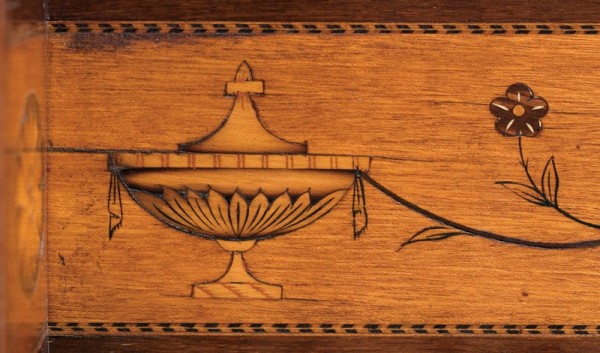
Detail of the inlay on the nameboard of the piano illustrated in fig. 92.
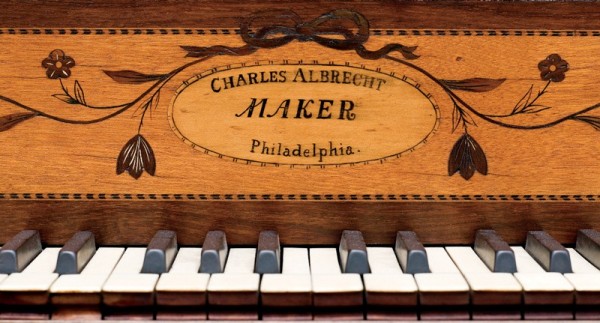
Detail of the nameboard on the piano illustrated in fig. 92.
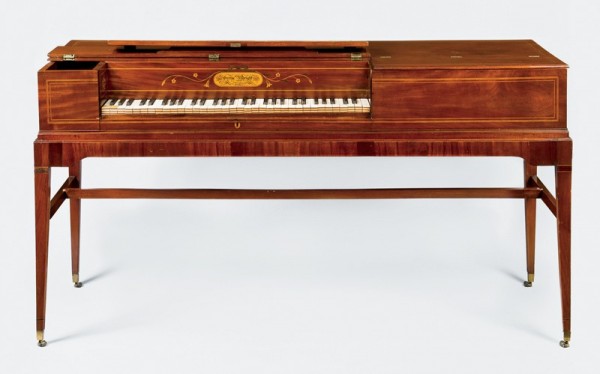
George Albrecht, square piano, Philadelphia, Pennsylvania, ca. 1797. Mahogany with mahogany veneer and mixed-wood inlay; ivory, ebony, brass. H. 33 7/8", W. 64 5/8", D. 22 1/4". (Courtesy, State Museum of Pennsylvania, Pennsylvania Historical and Museum Commission; photo, Gavin Ashworth.) The only known piano signed by George Albrecht, it may date to 1797, when Charles is absent from the Philadelphia city directory and was likely in Chester County.
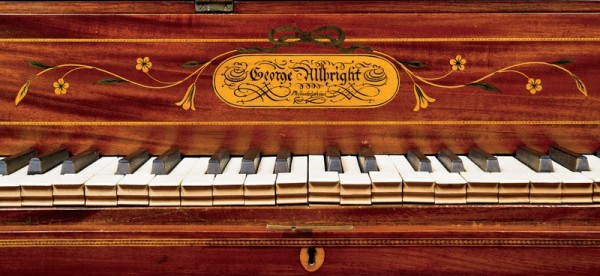
Detail of the nameboard on the piano illustrated in fig. 95. (Photo, Gavin Ashworth.)
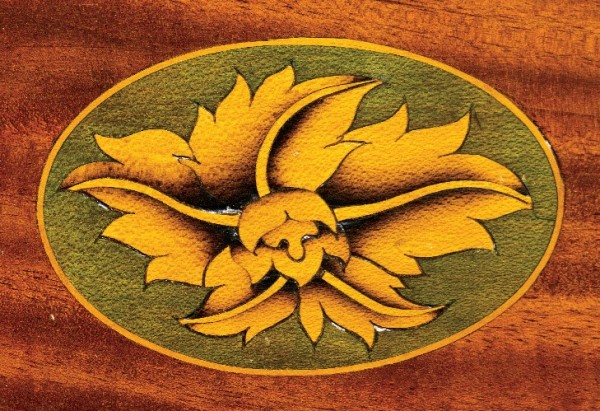
Detail of the key well inlay on the piano illustrated in fig. 95. (Photo, Gavin Ashworth.)
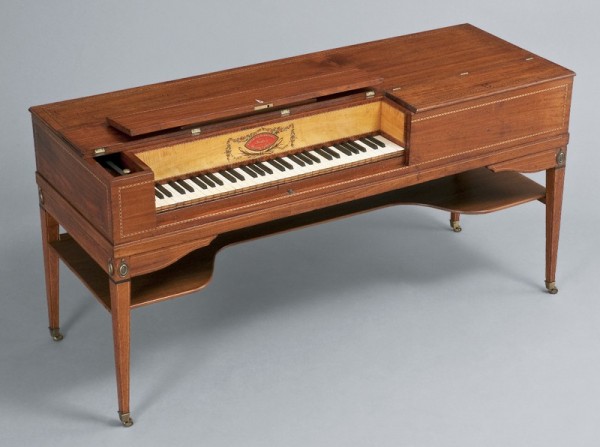
Charles Albrecht, square piano, Philadelphia, Pennsylvania, 1800–1805. Mahogany, mahogany and satinwood veneer, ivory, ebony, and brass. H. 31 1/2", W. 63", D. 22 1/4". (Courtesy, Colonial Williamsburg Foundation, gift of Mrs. Jeannette S. Hamner; photo, John Watson.) This piano has the serial number 166 and is signed on the key bed “Joshua Baker Maker.” The music shelf is replaced.
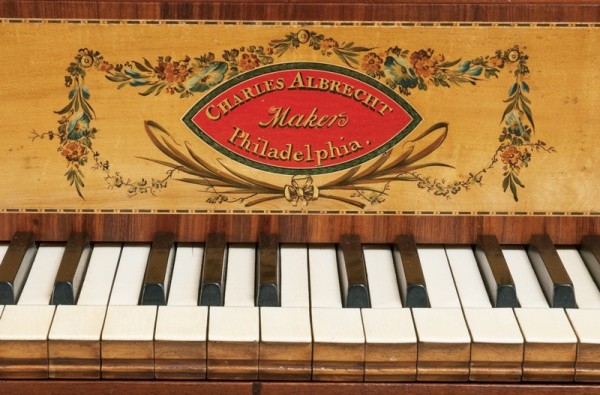
Detail of the nameboard on the piano illustrated in fig. 98.
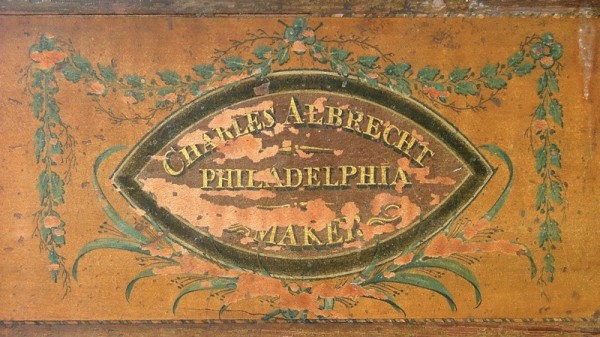
Detail of the nameboard on a square piano by Charles Albrecht, Philadelphia, Pennsylvania, ca. 1800. (Courtesy, Blennerhassett Historical Foundation; photo, Donald H. Prior.)
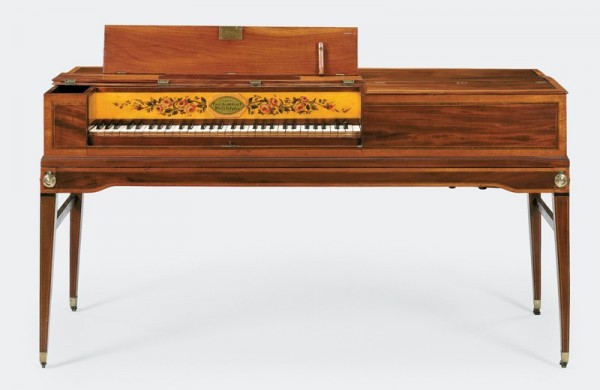
Charles Albrecht, square piano, Philadelphia, Pennsylvania, ca. 1800. Mahogany, mahogany and satinwood veneer; ivory, ebony, and brass. H. 33 3/4", W. 62 3/4", D. 22 1/4". (Courtesy, Christie’s Images, Ltd.)
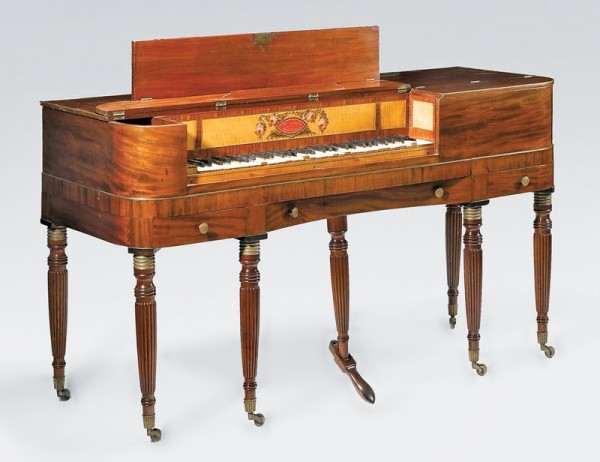
Charles Albrecht and Charles Deal, square piano, Philadelphia, Pennsylvania, 1813. Mahogany, mahogany and satinwood veneer; ivory, ebony, and brass. H. 35 1/4", W. 69", D. 25". (Courtesy, Freeman’s; photo, Elizabeth Field.) This piano has the serial number 71 and is signed on the inside by Charles Deal.
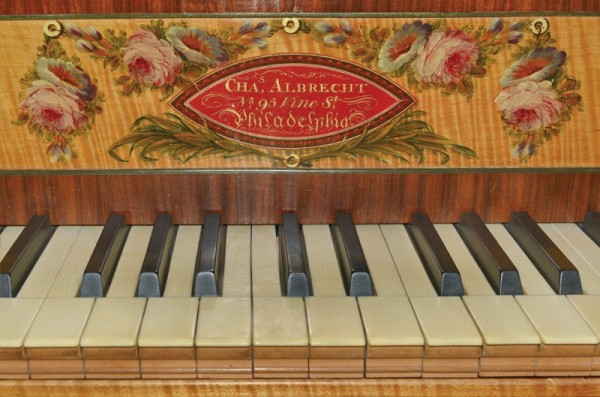
Detail of the nameboard on the piano illustrated in fig. 102. (Photo, Daniel C. Scheid.)
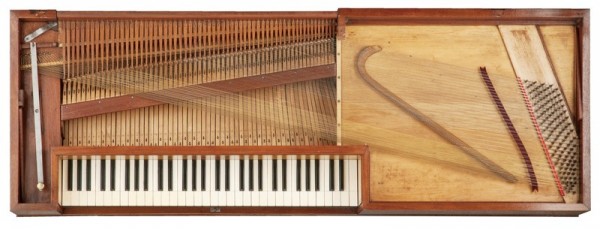
Detail of the action in the piano illustrated in fig. 98. (Photo, John Watson.)
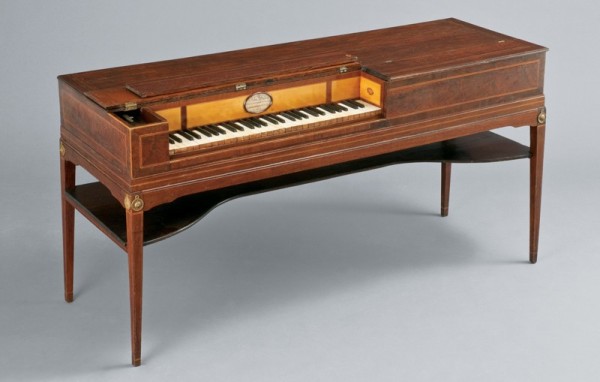
John Huber, square piano, Harrisburg, Pennsylvania, 1805–1809. Mahogany with satinwood veneer; ivory, ebony; paper, glass. H. 33 1/8", W. 65 5/8", D. 23 1/8". (Colonial Williamsburg Foundation, The Friends of the Colonial Williamsburg Collections Fund; photo, John Watson.)
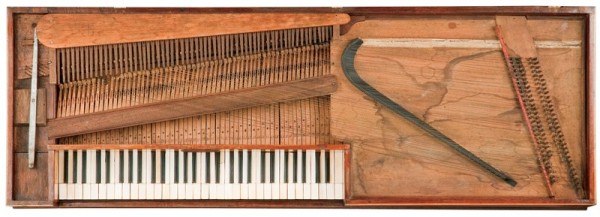
Detail of the action in the piano illustrated in fig. 105. (Photo, John Watson.)
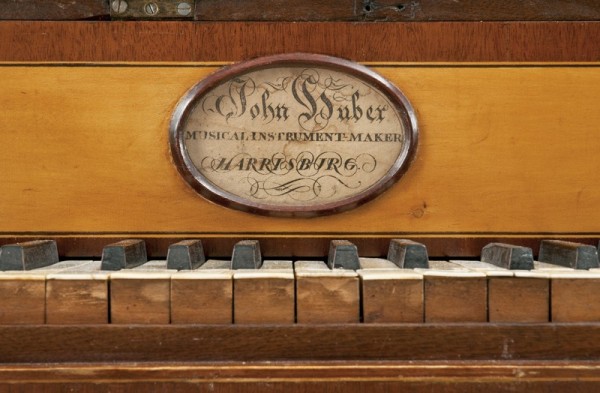
Detail of the label on the piano illustrated in fig. 105. (Photo, John Watson.)
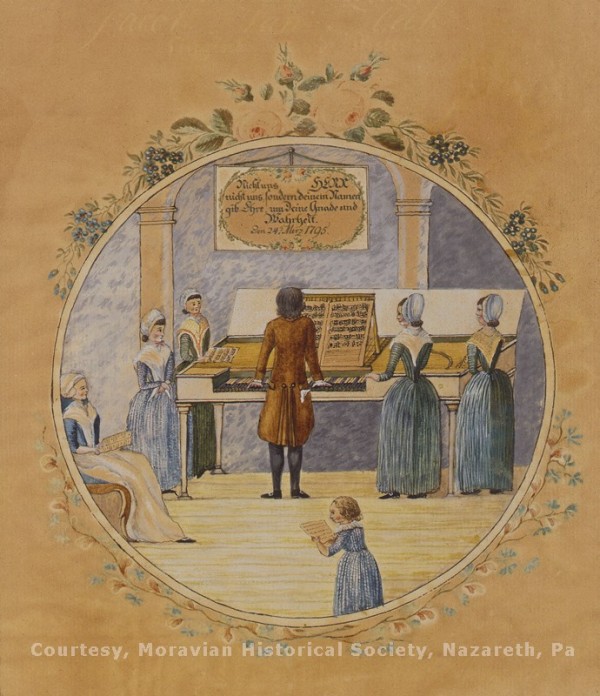
Anna Kliest, The Birthday Wish, made for Jacob van Vleck, Bethlehem, Pennsylvania, 1795. 9" x 7 1/2". Watercolor and ink on laid paper. (Courtesy, Moravian Historical Society, Nazareth, Pa.)
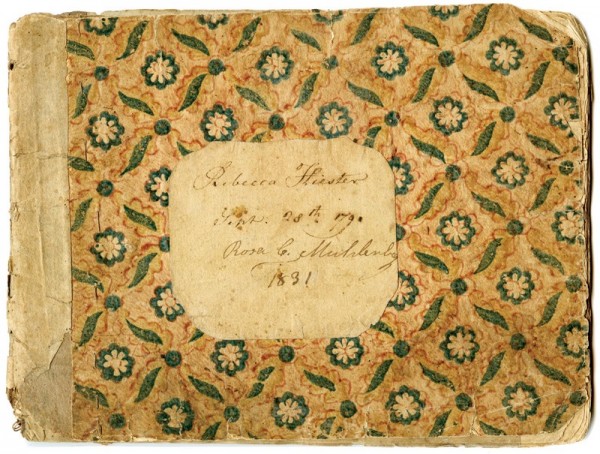
Tunebook, probably Bethlehem, Pennsylvania, 1791. (Courtesy, Winterthur Library, Joseph Downs Collection of Manuscripts and Printed Ephemera; photo, James Schneck.) This book may have been shared with Rebecca Hiester’s sister, Mary Elisabeth, whose name is inscribed within.

Detail of the nameboard on a square piano by John Haberacker, Reading, Berks County, Pennsylvania, ca. 1805. Satinwood. (Courtesy, Marlowe A. Sigal.)
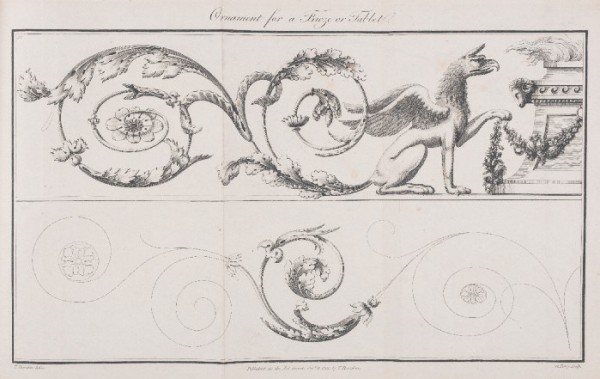
Design for a frieze or tablet illustrated in plate 36 in Thomas Sheraton’s The Cabinet-Maker and Upholsterer’s Drawing Book (London, 1791–1794). (Courtesy, Winterthur Library, Printed Book and Periodical Collection; photo, James Schneck.)
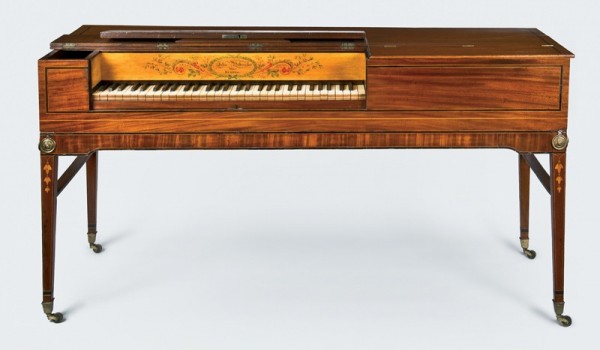
John Haberacker, square piano, Reading, Berks County, Pennsylvania, ca. 1805. Mahogany with mahogany and satinwood veneer, ivory, and ebony. H. 33 5/8, W. 64, D. 22 5/8". (Courtesy, Historic RittenhouseTown; photo, Gavin Ashworth.)

Detail of the nameboard on the piano illustrated in fig. 112. (Photo, Gavin Ashworth.)
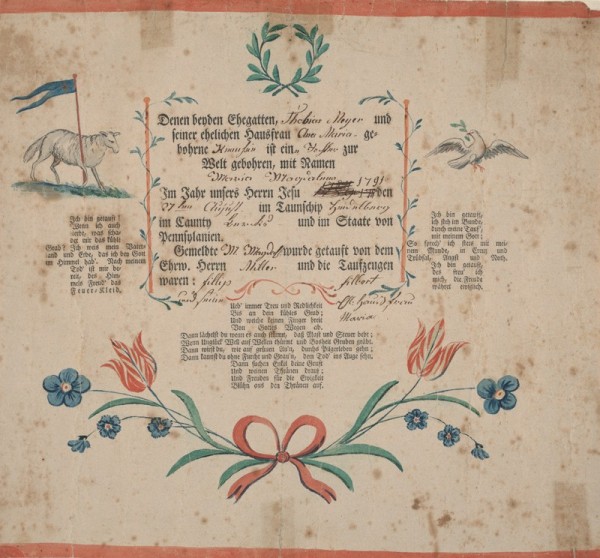
Birth and baptismal certificate of Maria Magdalena Meyer, decoration attributed to Frederick Christopher Bischoff, Reading, Berks County, Pennsylvania, ca. 1800. Watercolor and ink on laid paper. 13" x 14". (Courtesy, Rare Books Department, Free Library of Philadelphia.)
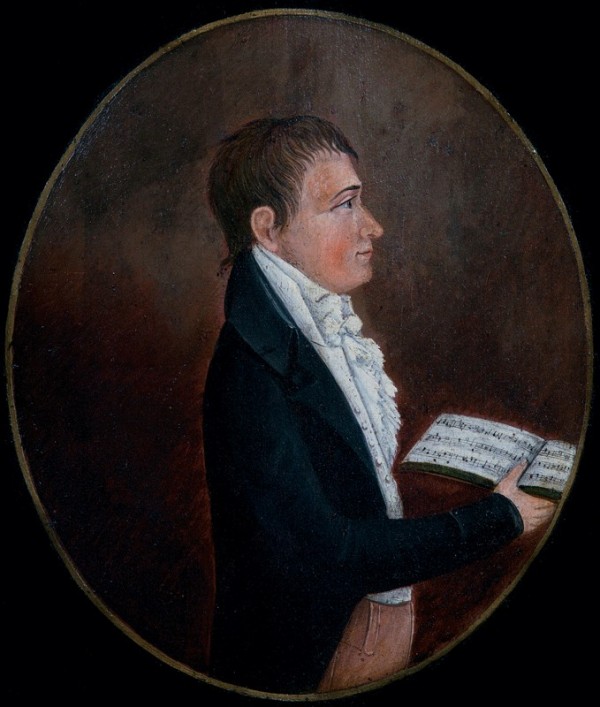
Portrait of John Stump, attributed to Frederick Christopher Bischoff, Reading, Berks County, Pennsylvania, ca. 1805. Oil on panel. 10" x 8". (Courtesy, Historical Society of Berks County, Reading, Pa.; photo, Gavin Ashworth.)
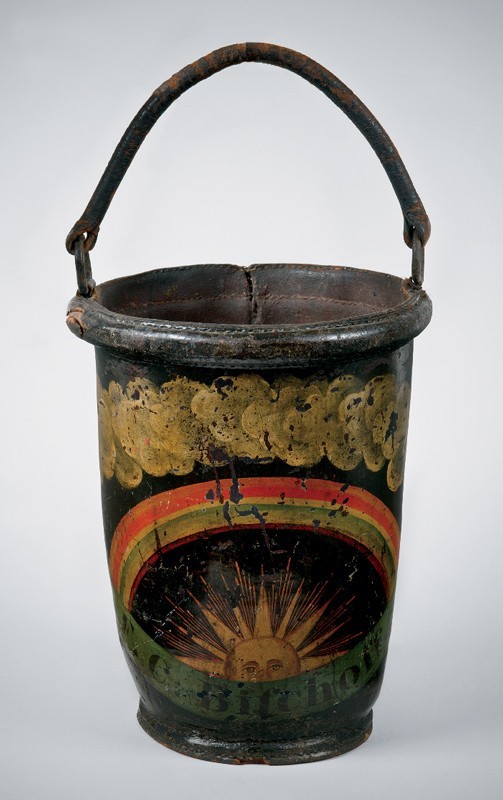
Frederick Christopher Bischoff, fire bucket, Reading, Berks County, Pennsylvania, ca. 1805. Leather. H. 13". (Courtesy, Historical Society of Berks County, Reading, Pa.; photo, Gavin Ashworth.)
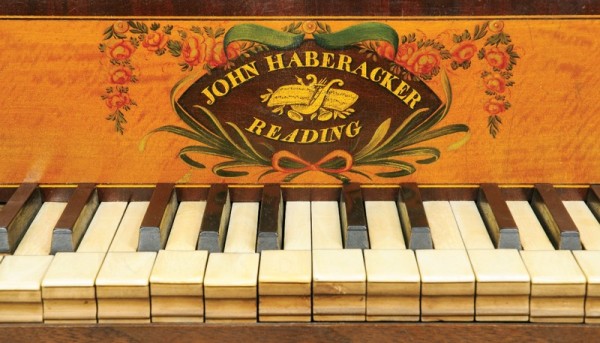
Detail of the nameboard on a square piano by John Haberacker, Reading, Berks County, Pennsylvania, ca. 1820. (Courtesy, John Watson.)
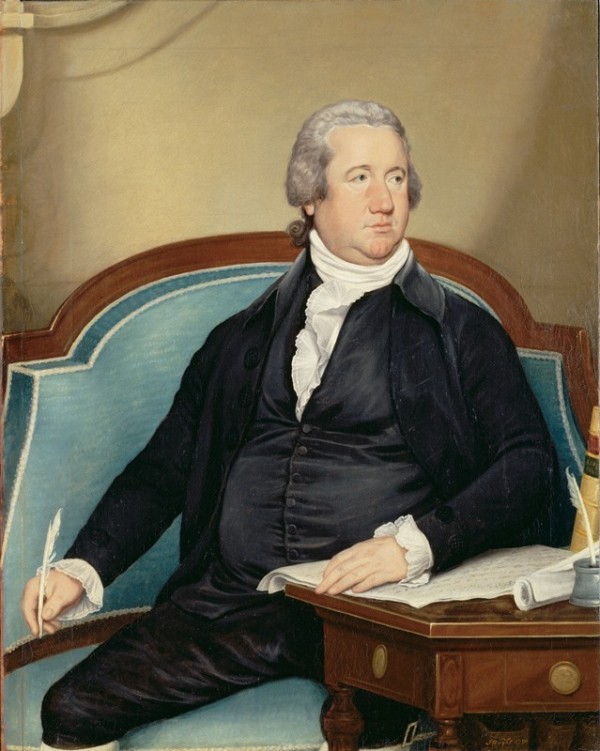
Joseph Wright, Frederick Augustus Conrad Muhlenberg, New York, 1790. Oil on canvas with applied wood strip. 47" x 37" (including frame). (Courtesy, National Portrait Gallery, Smithsonian Institution / Art Resource, NY.) A 1 3/8" strip of wood was added to the canvas at the left edge and painted by Wright.
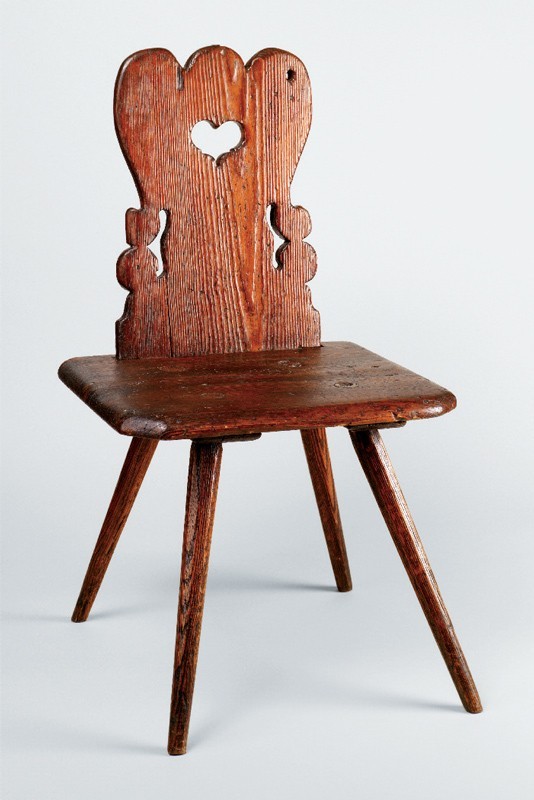
Brettstuhl (board chair), southeastern Pennsylvania, ca. 1775. Pine and oak. H. 32", W. 18", D. 18". (Courtesy, Winterthur Museum; photo, Laszlo Bodo.)
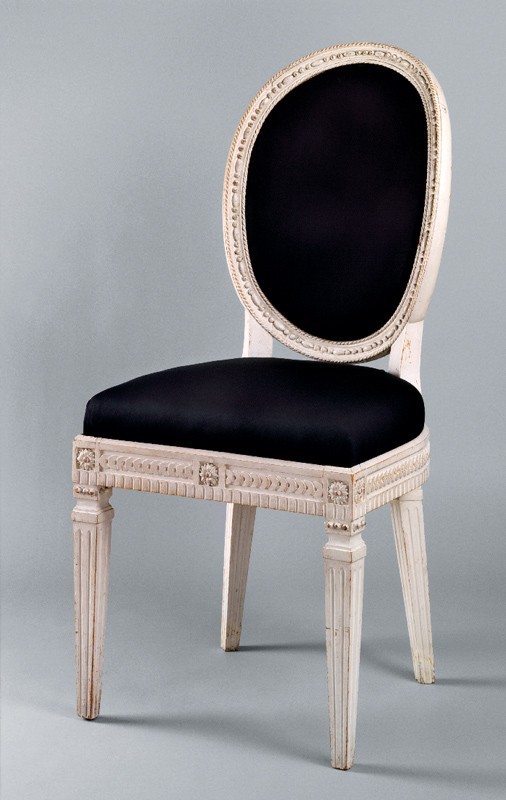
Chair attributed to Johann Friedrich Bourquin (1762–1830), Bethlehem, Northampton County, Pennsylvania, 1803–1806. Maple; paint. H. 39 1/4", W. 18 1/2", D. 18". (Courtesy, Moravian Archives, Bethlehem, Pa.; photo, Winterthur Museum, Laszlo Bodo.)
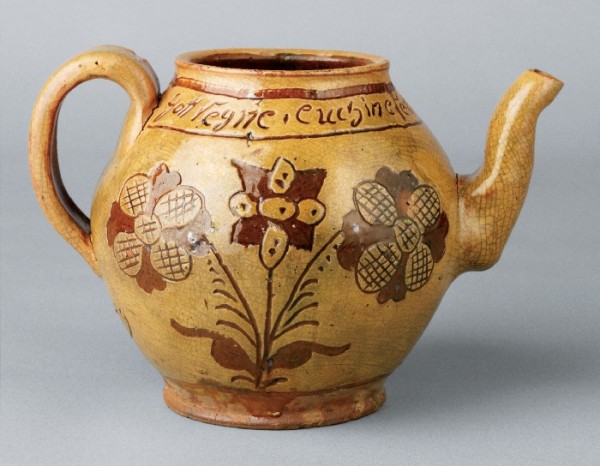
Teapot, southeastern Pennsylvania, 1779. Lead-glazed red earthenware. H. 5 5/8". (Courtesy, Winterthur Museum; photo, Laszlo Bodo.)
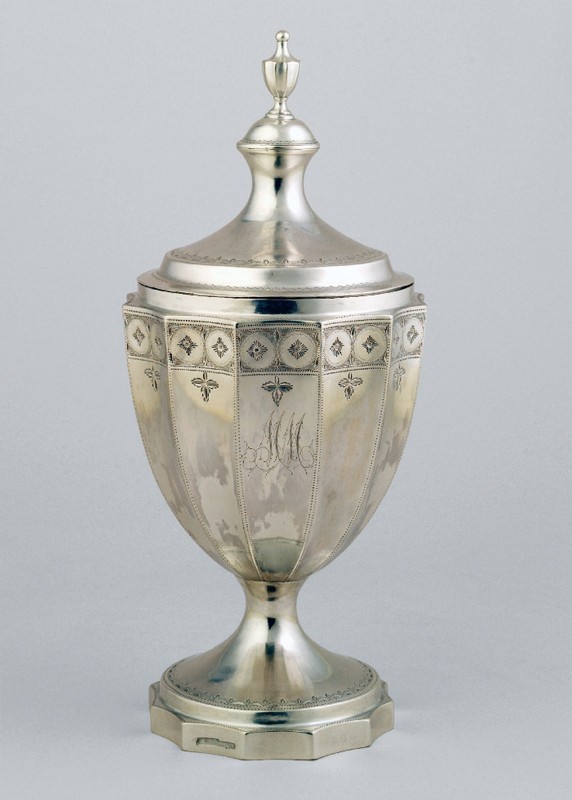
Christian Wiltberger (1766–1851), sugar bowl. Philadelphia, Pennsylvania, ca. 1800. Silver. H. 10 1/4". (Courtesy, Winterthur Museum.)
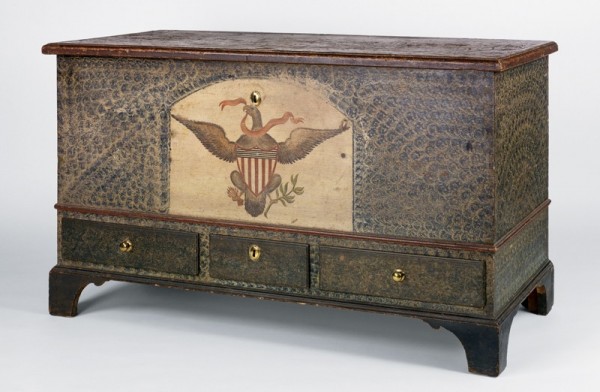
Chest-over-drawers, southeastern Pennsylvania, ca. 1815. Pine; paint; brass. H. 29 3/8", W. 51", D. 23". (Courtesy, Winterthur Museum; photo, Laszlo Bodo.)
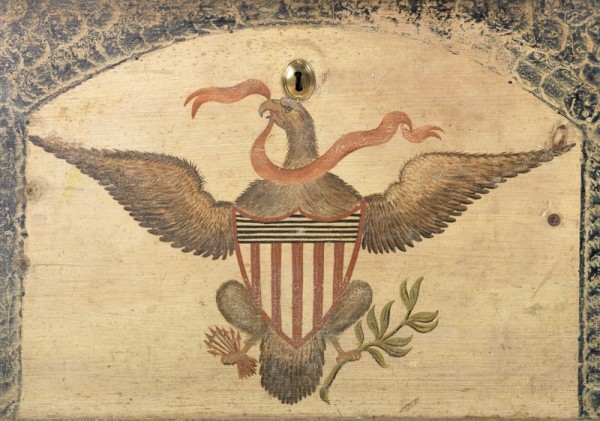
Detail of the eagle on the chest illustrated in fig. 123. (Courtesy, Winterthur Museum; photo, Laszlo Bodo.)
